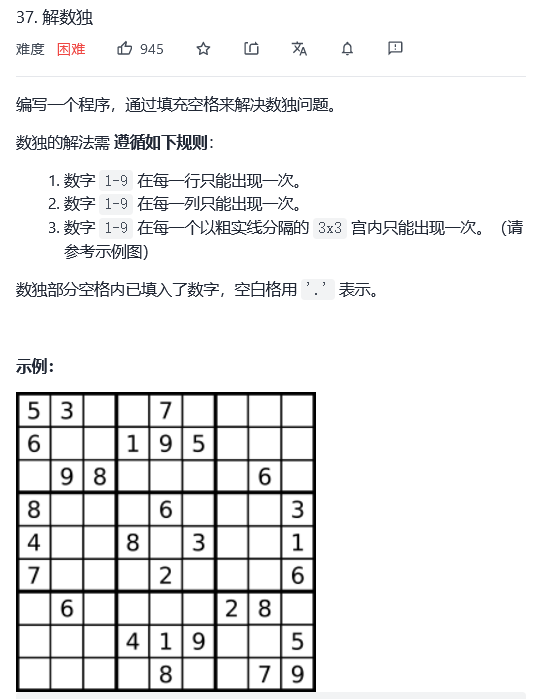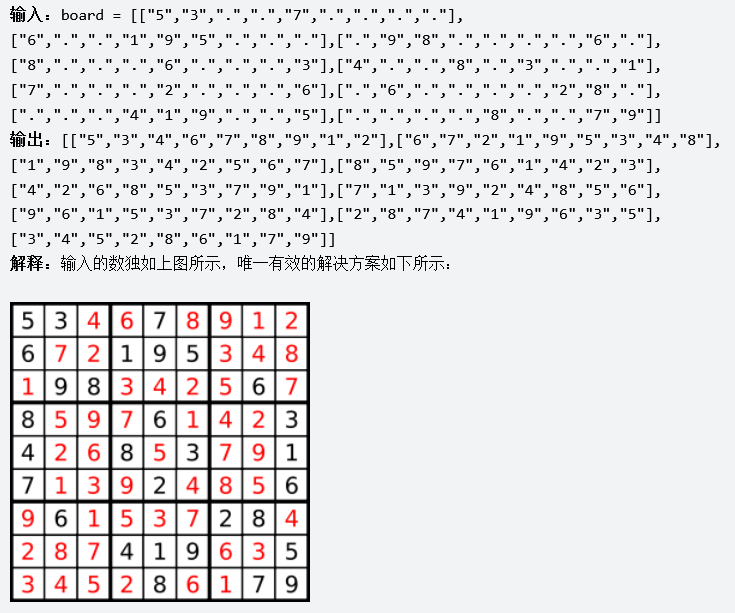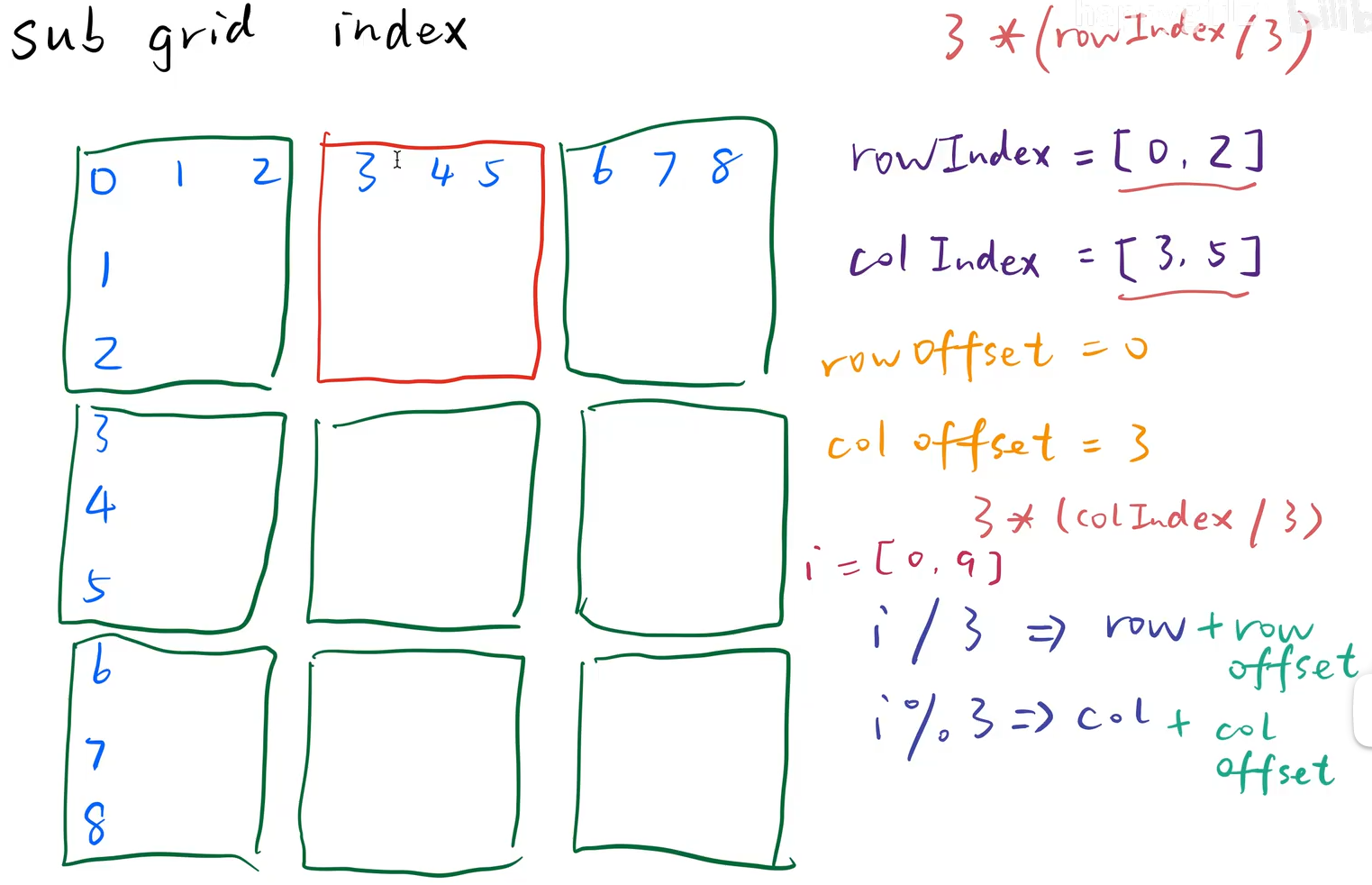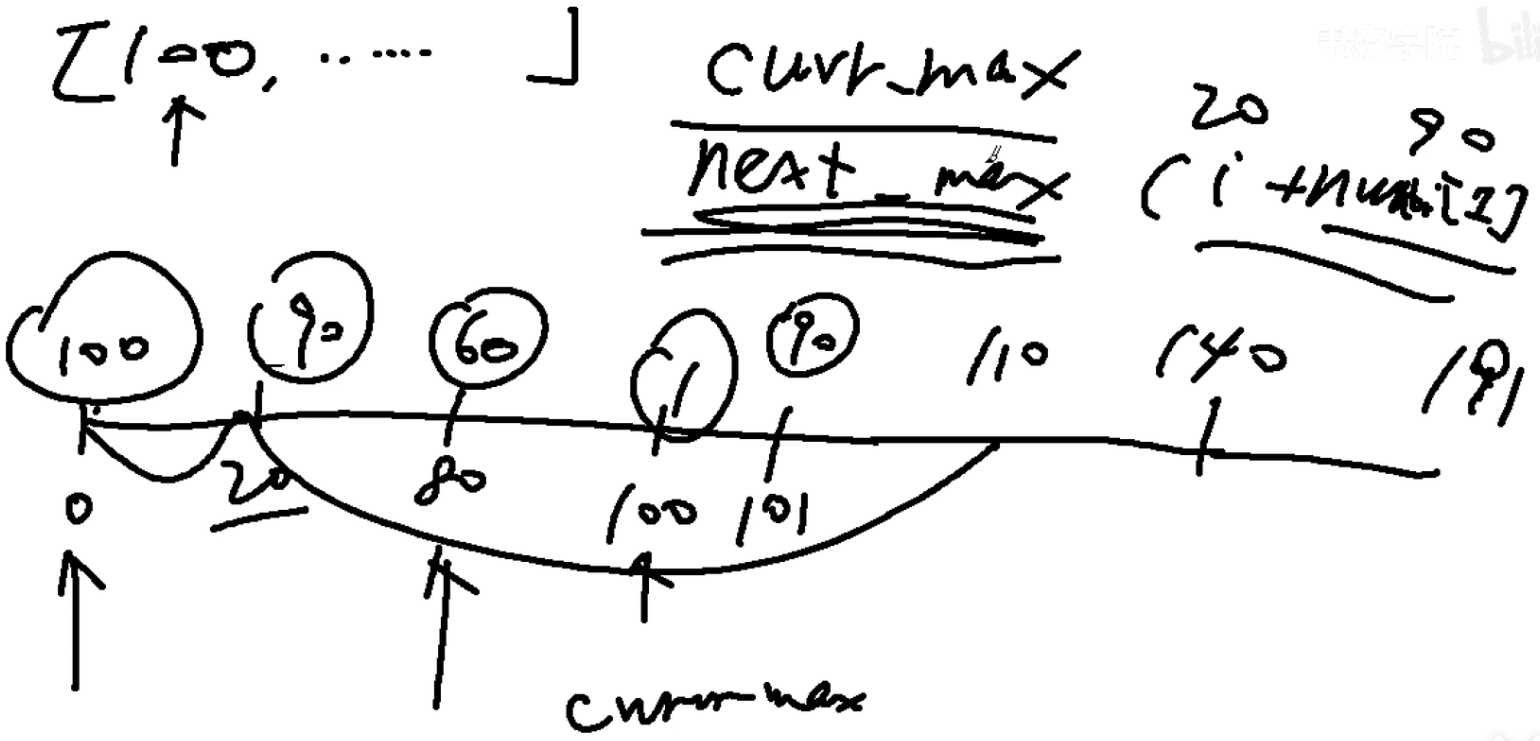3. Longest string without duplicate characters
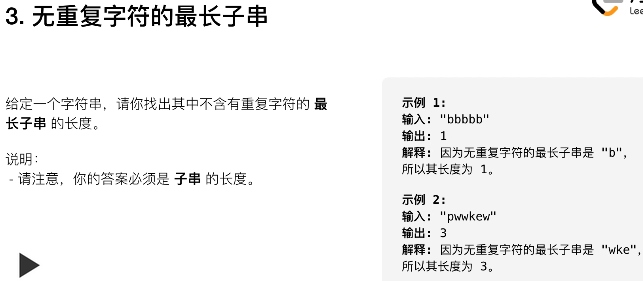 Method 1. Violence solution
Method 1. Violence solution
Generate substrings one by one
See if it does not contain duplicate characters
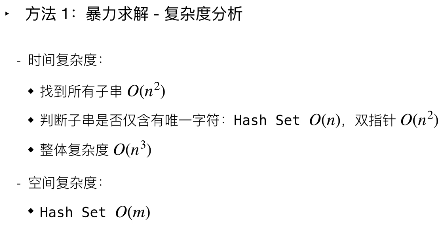 Method 2. Sliding window and optimization
Method 2. Sliding window and optimization
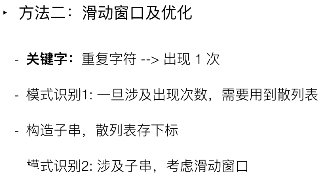
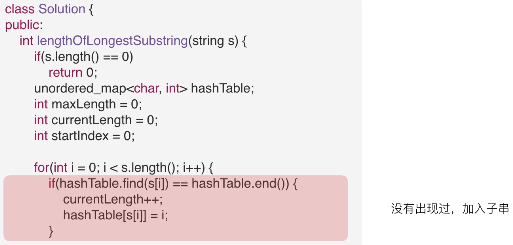
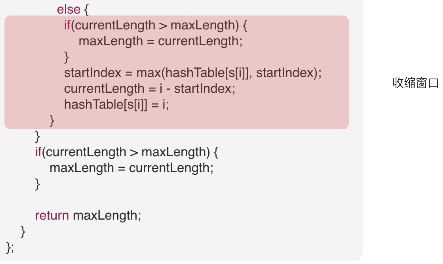
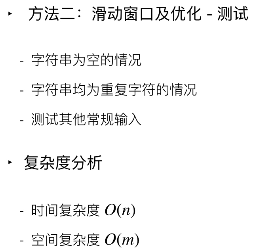


 Do not repeat from a to C. when a repeats, the left pointer moves one bit to the right
Do not repeat from a to C. when a repeats, the left pointer moves one bit to the right
 The right pointer moves one bit to the right
The right pointer moves one bit to the right










 Double pointer JAVA Code:
Double pointer JAVA Code:
class Solution {
public int lengthOfLongestSubstring(String s) {
HashSet<Character> set = new HashSet<>();
int right = -1;
int maxLen = 0;
for(int left=0;left<s.length();left++){
if(left != 0){
set.remove(s.charAt(left-1));
}
while(right+1 < s.length() && !set.contains(s.charAt(right+1))){
set.add(s.charAt(right+1));
right++;
}
maxLen = Math.max(maxLen, right-left+1);
}
return maxLen;
}
}
#####################################################
#####################################################
#####################################################
#####################################################
#####################################################
4. Find the median of two positively ordered arrays
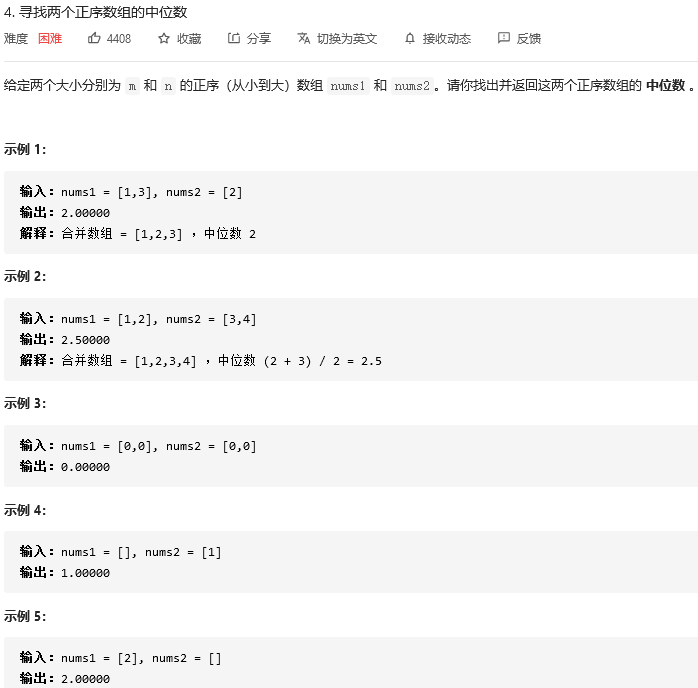
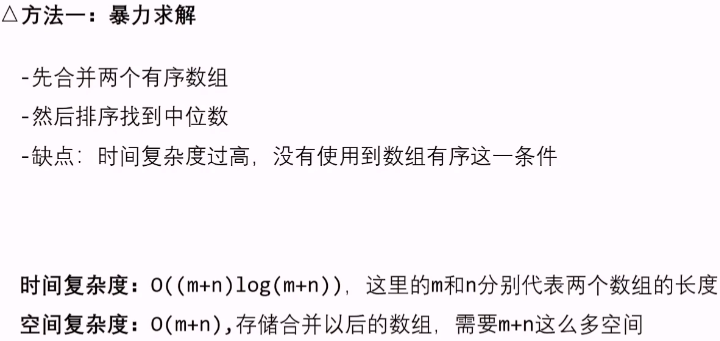
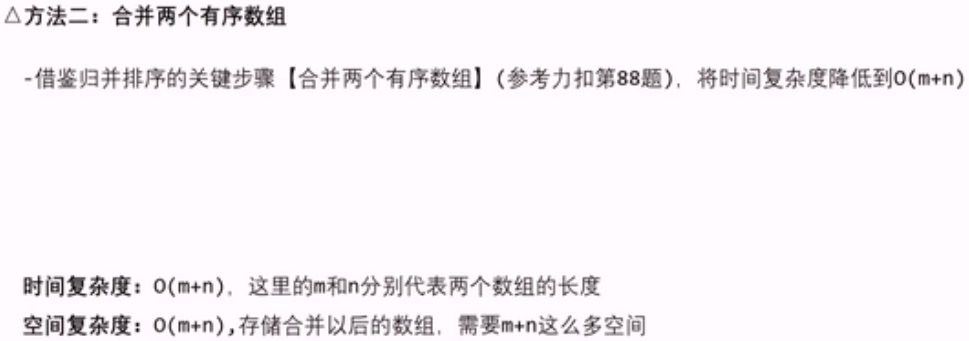
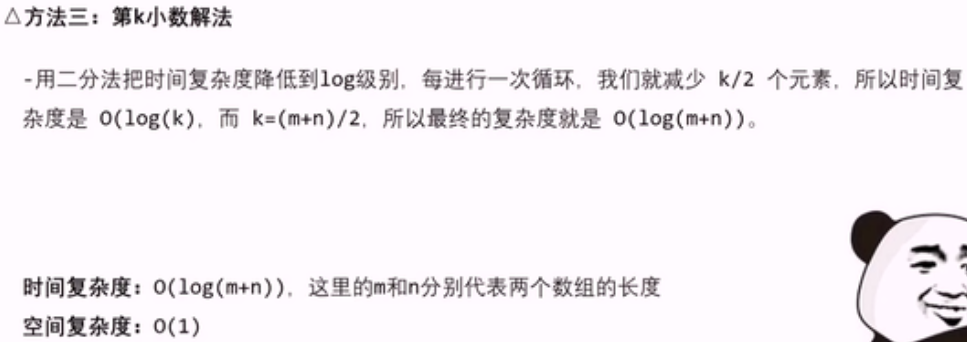


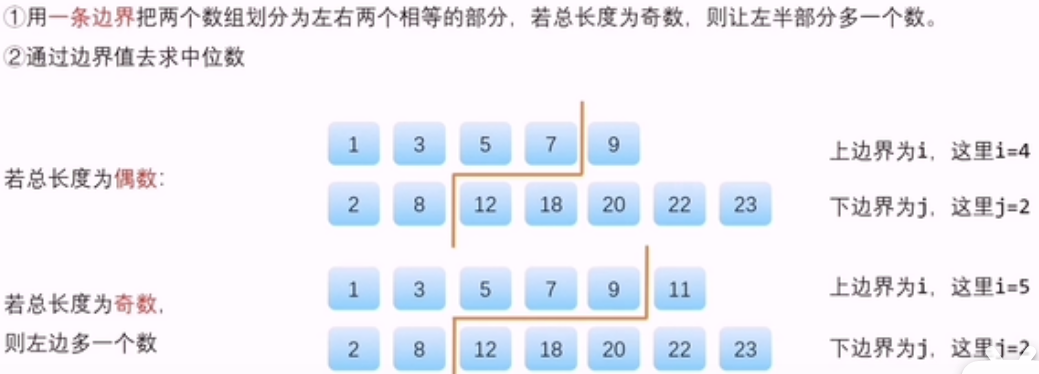
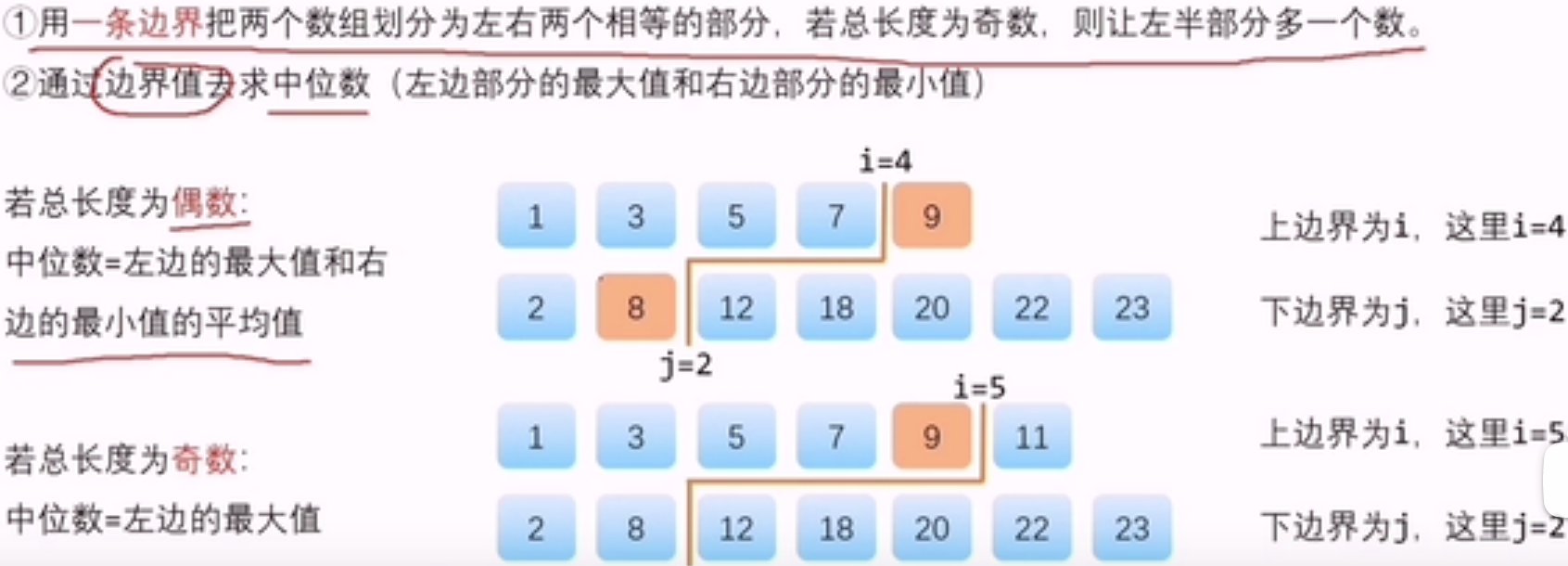
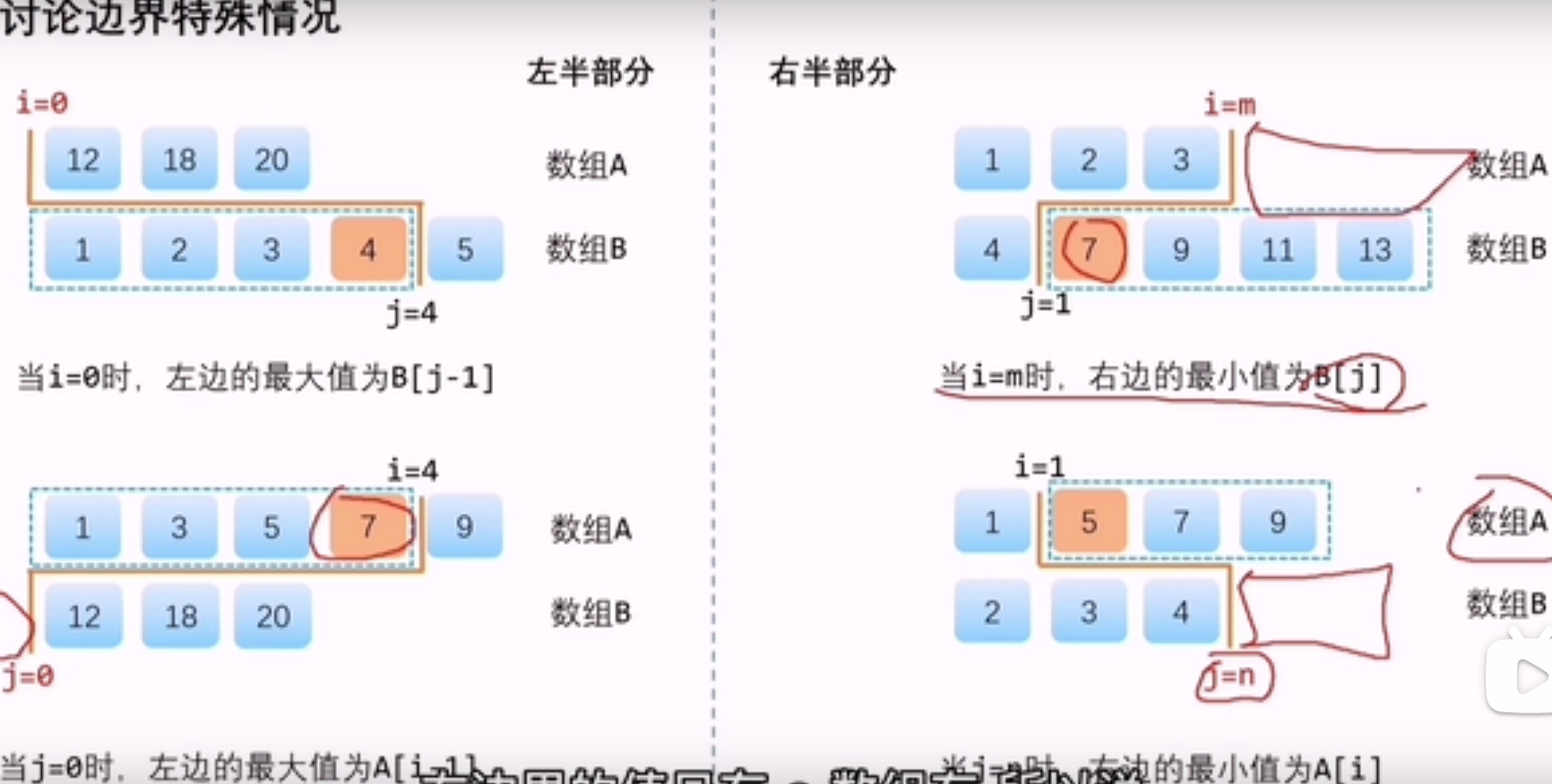
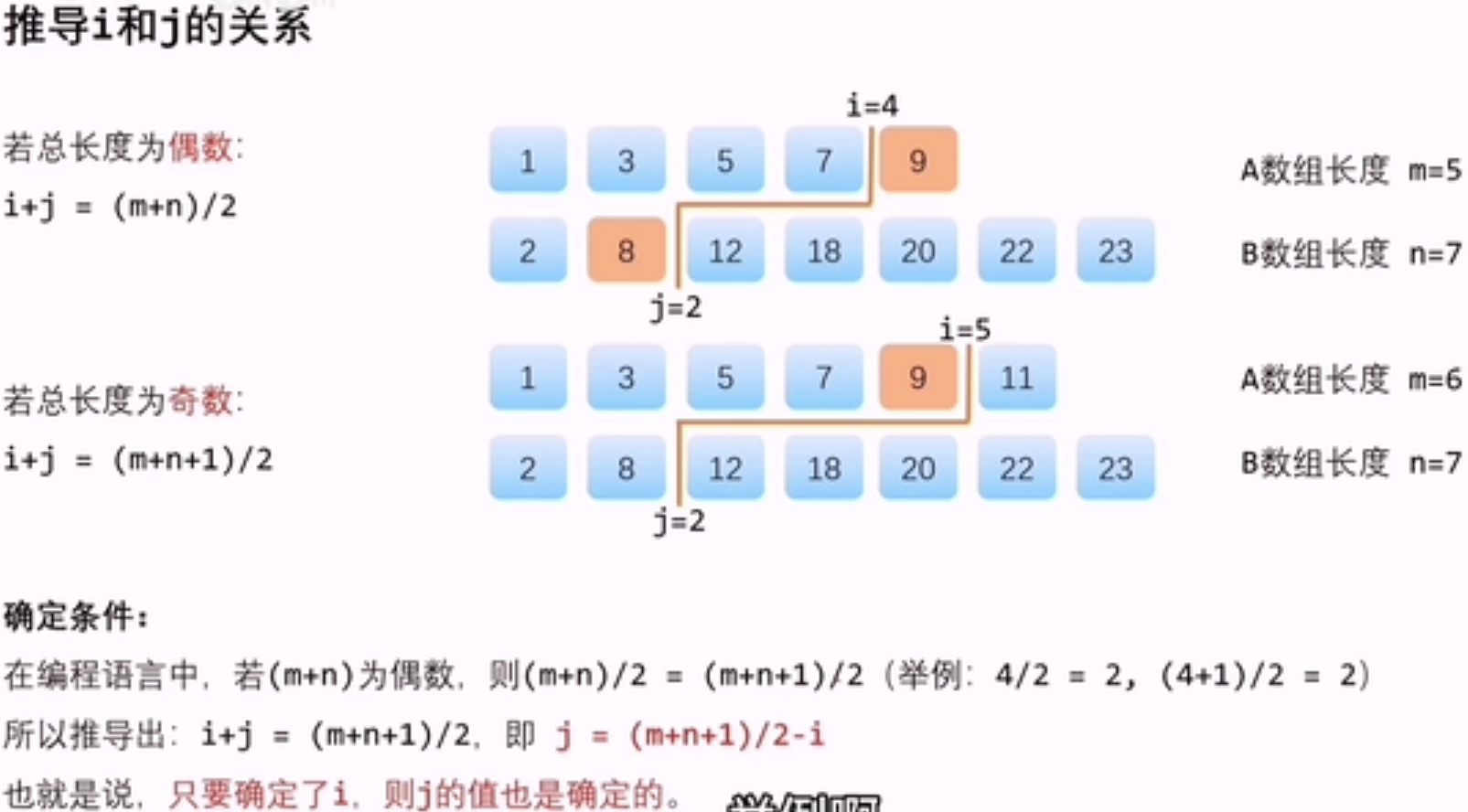
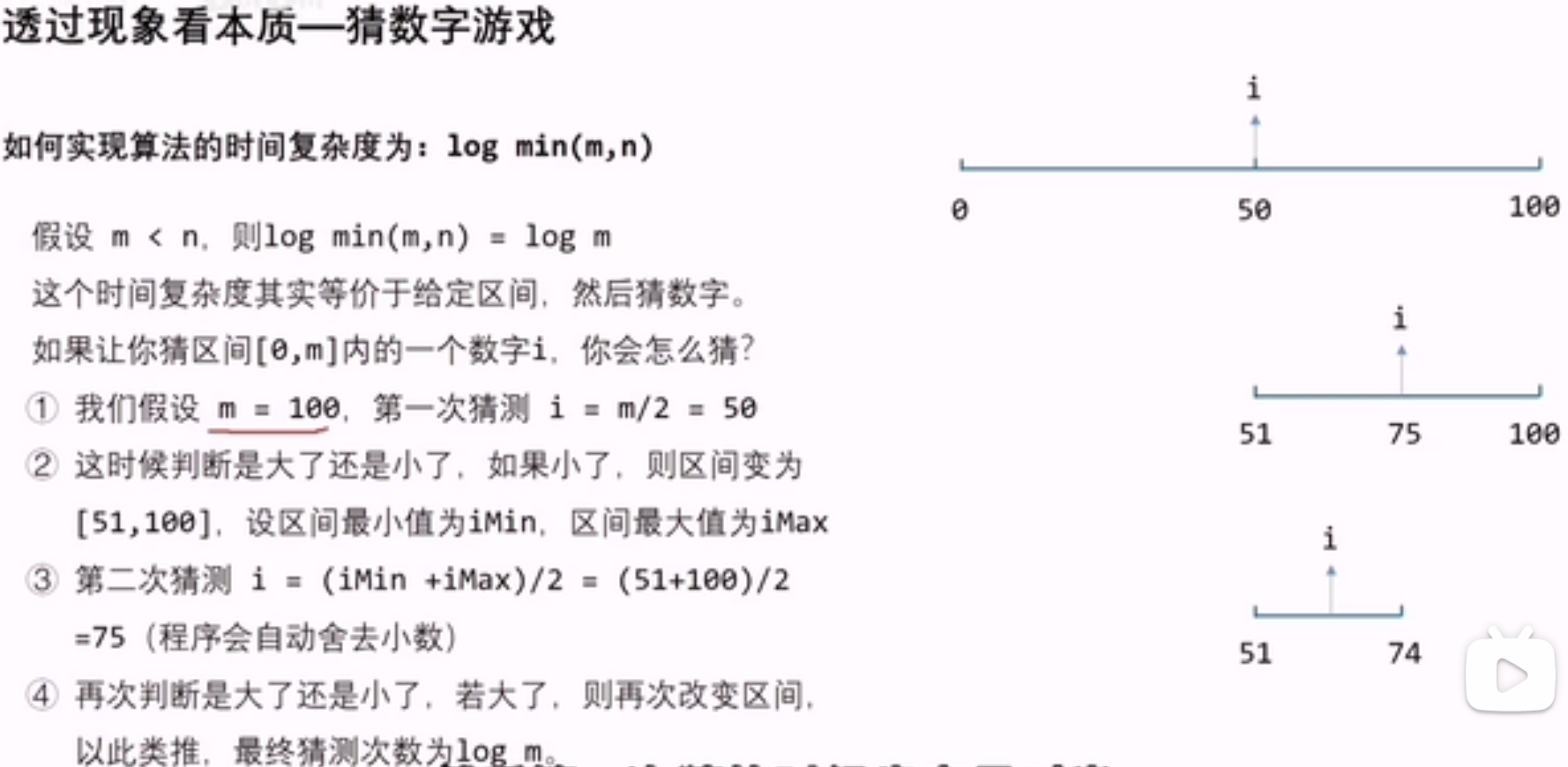
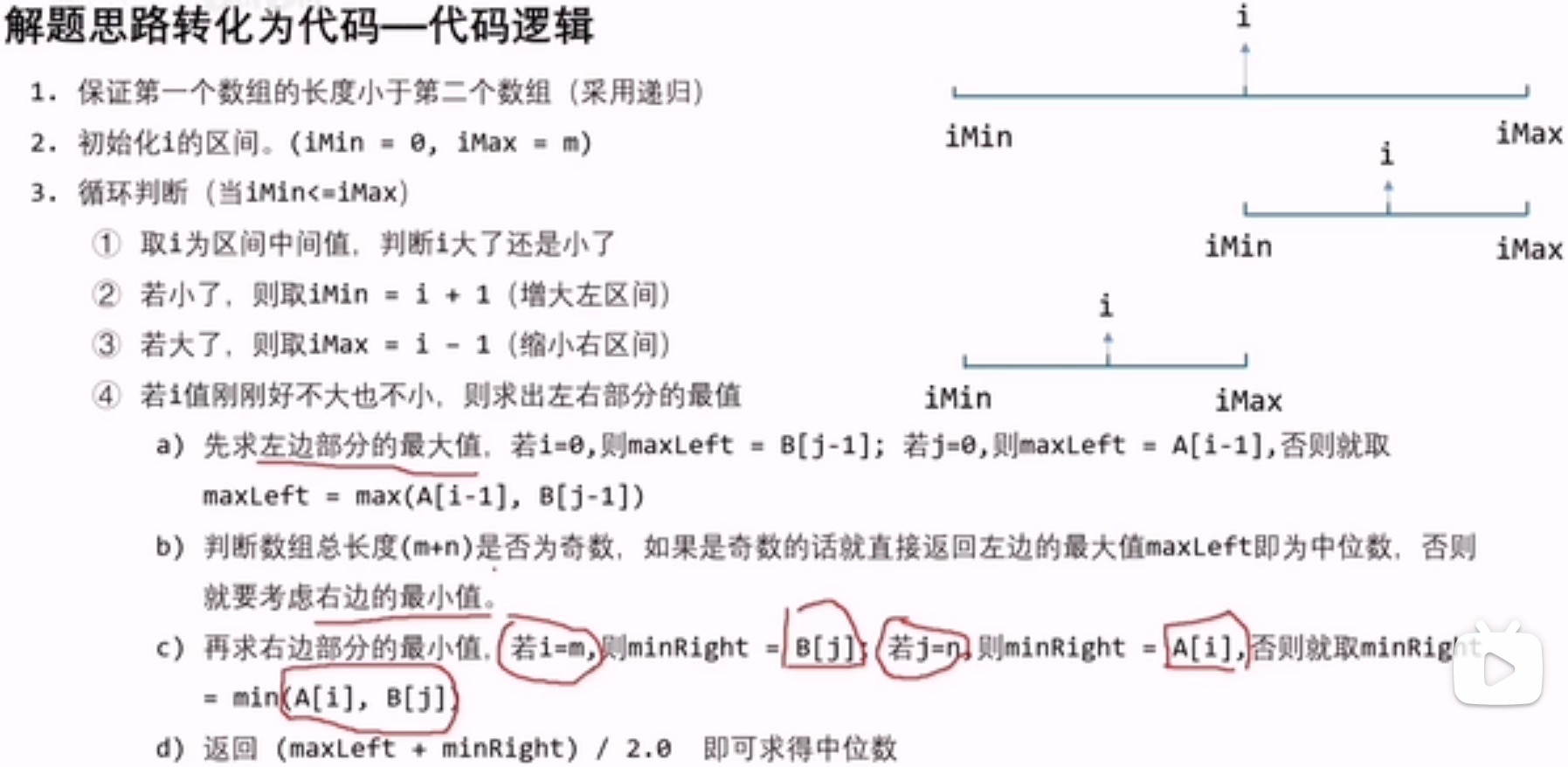
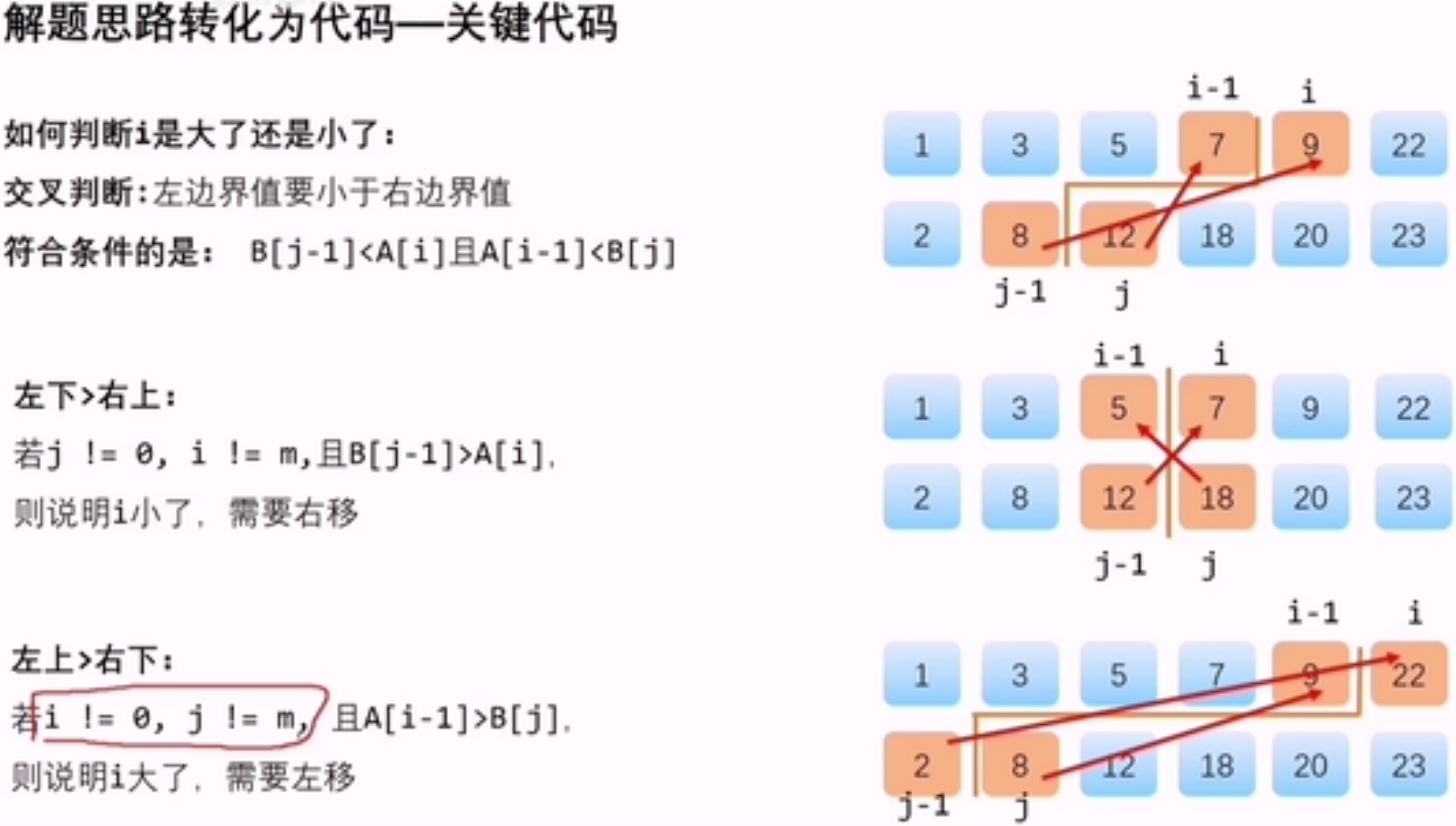 JAVA Code:
JAVA Code:
class Solution {
public double findMedianSortedArrays(int[] nums1, int[] nums2) {
int m = nums1.length;
int n = nums2.length;
if(m > n){
return findMedianSortedArrays(nums2,nums1); //Guarantee m < = n
}
//Initialize the interval of i. The minimum value of i is 0 and the maximum value is m
int iMin = 0, iMax = m;
while(iMin <= iMax){
int i = (iMin + iMax) / 2; //Dichotomy, take i as the middle value of the interval
int j = (m + n + 1) / 2 - i; //Determined by i j
//Cross compare to judge whether i is big or small
if(j != 0 && i != m && nums2[j-1]>nums1[i]){ //i need to increase
iMin = i + 1;
}
else if(i != 0 && j != n && nums1[i-1] > nums2[j]){ //i need to be reduced
iMax = i-1;
}
else{ //Meet the requirements, and list the boundary conditions for separate consideration
int maxLeft = 0;
if(i == 0){maxLeft = nums2[j-1];}
else if(j == 0){maxLeft = nums1[i-1];}
else{maxLeft = Math.max(nums1[i-1],nums2[j-1]);}
if((m+n)%2==1){return maxLeft;} //Odd numbers do not need to consider the right half
//If (m+n) is even, find the minimum value on the right
int minRight = 0;
if(i == m){minRight = nums2[j];}
else if(j == n){minRight = nums1[i];}
else{minRight = Math.min(nums2[j],nums1[i]);}
return (maxLeft + minRight)/2.0; //Return the average of the left and right most values, which is the median
}
}
return 0;
}
}
#########################################################
#########################################################
#########################################################
#########################################################
#########################################################
5. Longest palindrome substring
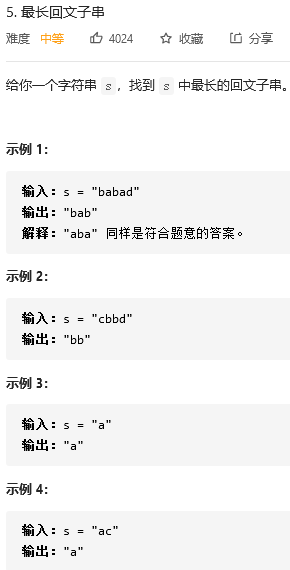
 If i and j point to two different elements, move the i subscript directly to the right
If i and j point to two different elements, move the i subscript directly to the right
If two pointers point to the same subscript, move the j subscript to the right
The i subscript is then placed back at the head of the string and scanned from scratch
 i and j are not equal, continue to move the i subscript to the right
i and j are not equal, continue to move the i subscript to the right












Dynamic planning:
1. Status container: one-dimensional array or two-dimensional array
2. Initialization: initial steps
3. State transition equation
4. Results
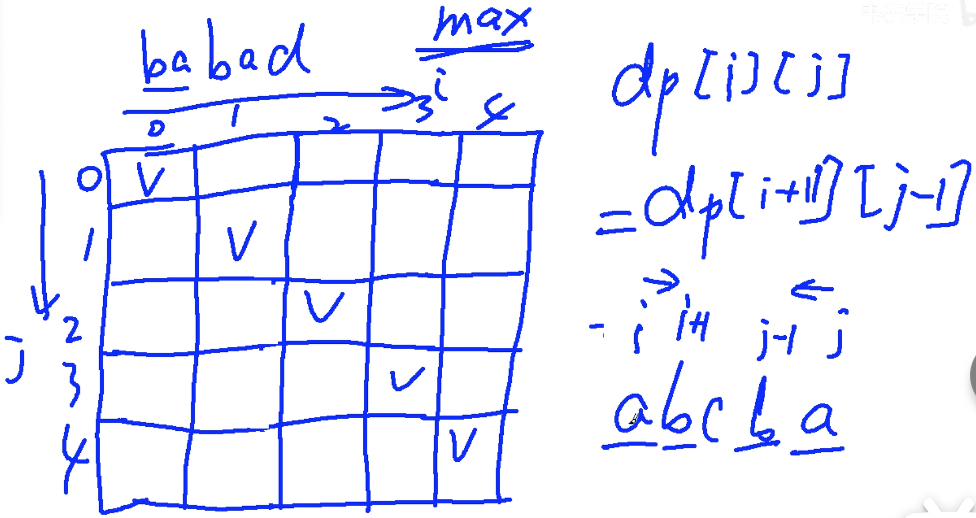 Dynamic programming JAVA Code:
Dynamic programming JAVA Code:
class Solution {
public String longestPalindrome(String s) {
int len = s.length();
if(len <= 1) return s;
//Status container
boolean[][] dp = new boolean[len][len];
for(int i = 0;i < len;i++){
dp[i][i] = true;
}
int max = 1,start = 0;
for(int j = 1;j < len;j++){
for(int i = 0; i < len-1 && i < j;i++){
if(s.charAt(i) != s.charAt(j)){
dp[i][j] = false;
}else{
if(j-i < 3){
dp[i][j] = true;
}else{
dp[i][j] = dp[i+1][j-1];
}
}
if(dp[i][j] && j-i+1 > max){
max = j-i+1;
start = i;
}
}
}
return s.substring(start,start+max);
}
}
####################################################
####################################################
####################################################
####################################################
####################################################
6. Z igzag transformation
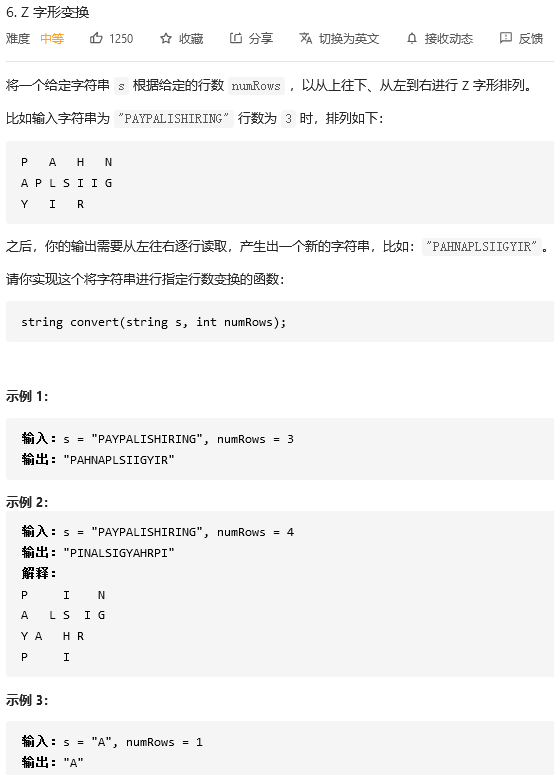
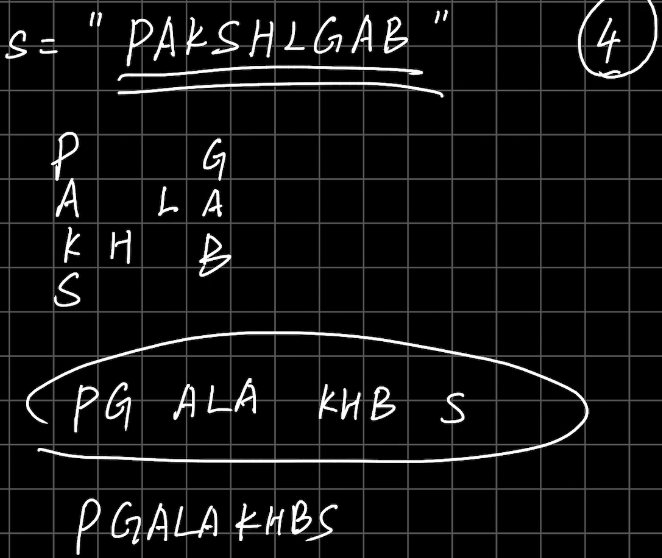
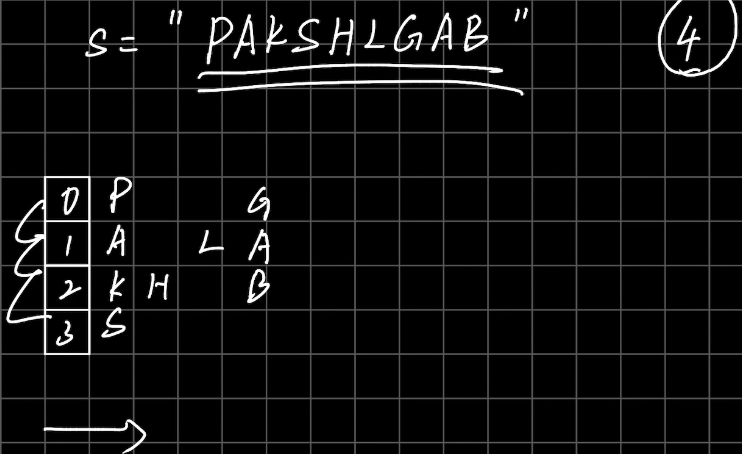
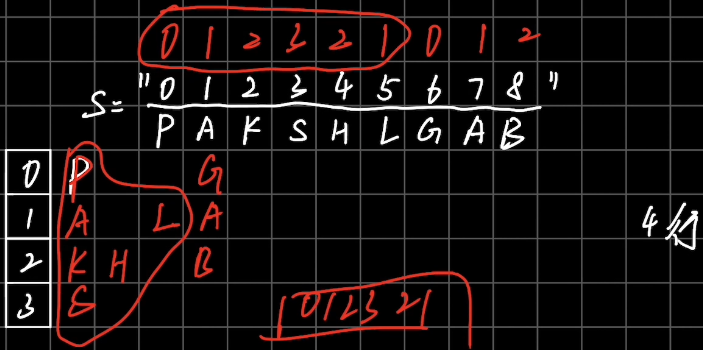
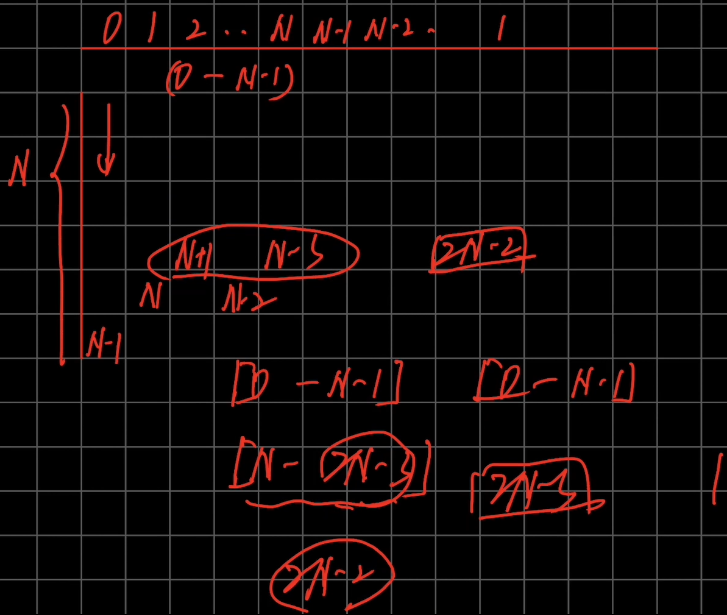
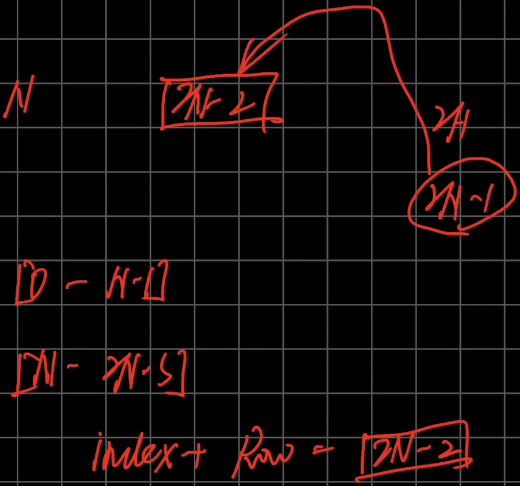 JAVA Code:
JAVA Code:
class Solution {
public String convert(String s, int numRows) {
if(numRows <= 1 || s.length() ==1){
return s;
}
int len = s.length();
StringBuilder[] sbd = new StringBuilder[numRows];
for(int i=0;i<numRows;i++){
sbd[i] = new StringBuilder();
}
int T = numRows*2 - 2;
for(int i = 0;i<len;i++){
int j = i%T;
if(j < numRows){
sbd[j].append(s.charAt(i));
}else{
sbd[T-j].append(s.charAt(i));
}
}
for(int i=1;i<numRows;i++){
sbd[0].append(sbd[i]);
}
return sbd[0].toString();
}
}
#################################################
#################################################
#################################################
#################################################
#################################################
8. String to integer conversion
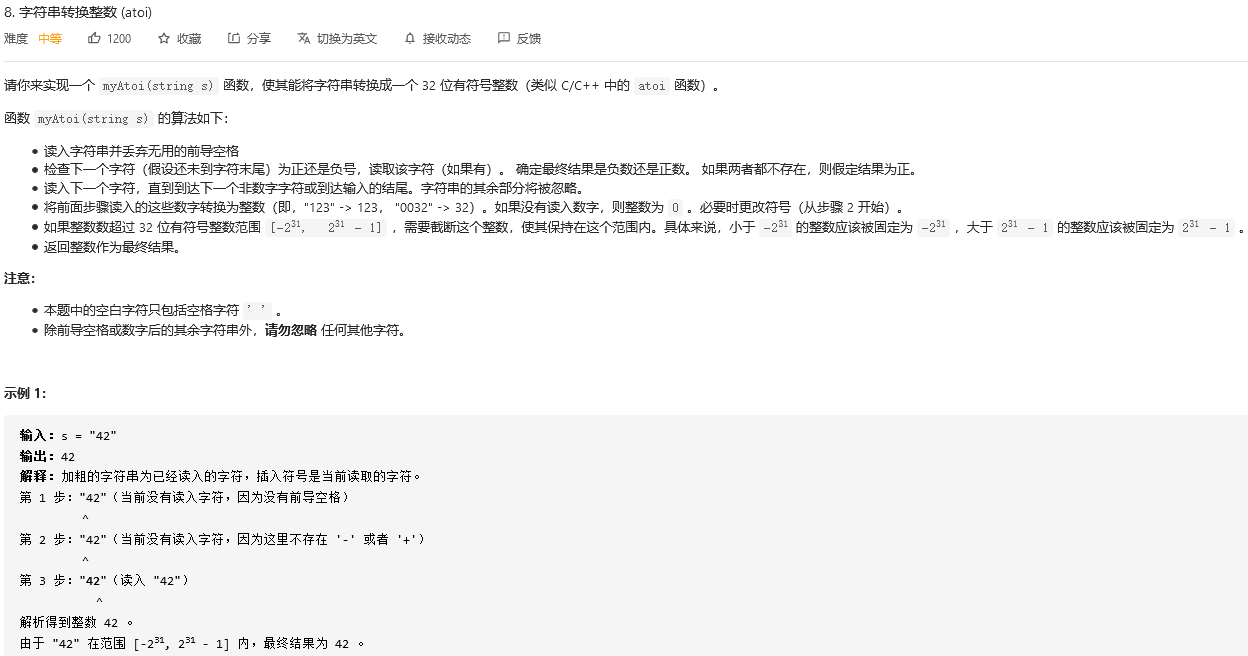
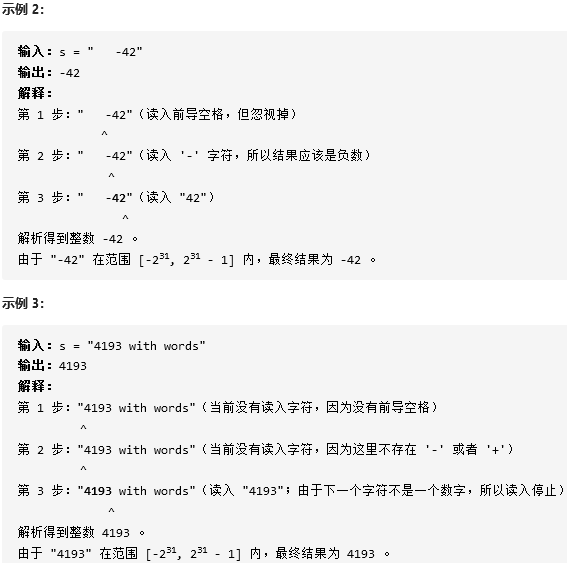
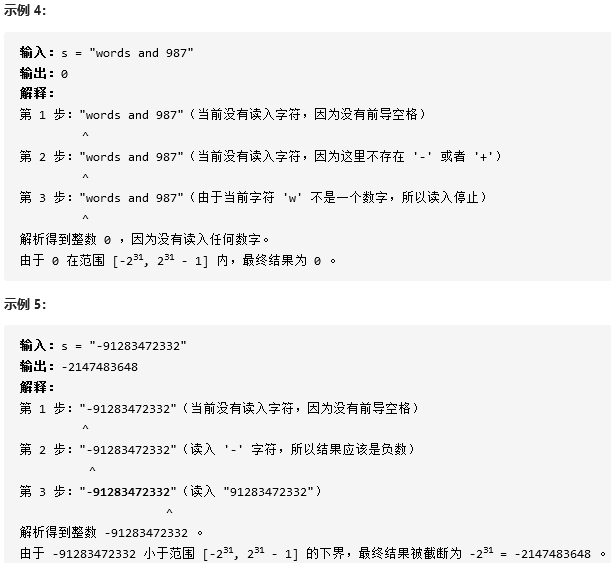 Finite state automata
Finite state automata
State transition path
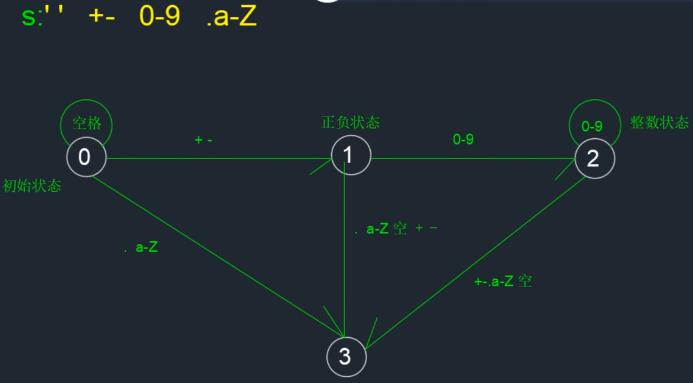
//'' row 0 ± row 1 0-9 row 2. a-Z row 3
// '' ± 0-9 .a-Z
//0: 0 1 2 3
//1: 3 3 2 3
//2: 3 3 2 3
//3: 3 3 2 3
JAVA Code:
class Solution {
private int sign = 1; //1 is a positive number - 1 is a negative number
private long ans = 0;
private String state = "start";
private Map<String,String[]> hashMap = new HashMap<>(){{
put("start",new String[]{"start","sign","number","end"});
put("sign",new String[]{"end","end","number","end"});
put("number",new String[]{"end","end","number","end"});
put("end",new String[]{"end","end","end","end"});
}};
public int myAtoi(String s){
for(int i=0;i<s.length();i++){
get(s.charAt(i));
}
return (int)(sign*ans);
}
public void get(char c){
state = hashMap.get(state)[getCol(c)];
if(state.equals("number")){
ans = 10 * ans +c - '0';
ans = sign == 1 ? Math.min(ans,(long)Integer.MAX_VALUE):Math.min(ans,-(long)Integer.MIN_VALUE);
}else if(state.equals("sign")){
sign = c == '+'?1:-1;
}
}
public int getCol(char c){
if(c == ' '){
return 0;
}else if(c == '+' || c=='-'){
return 1;
}else if(Character.isDigit(c)){
return 2;
}
return 3;
}
}
#############################################################
#############################################################
#############################################################
#############################################################
#############################################################
10. Regular expression pairing
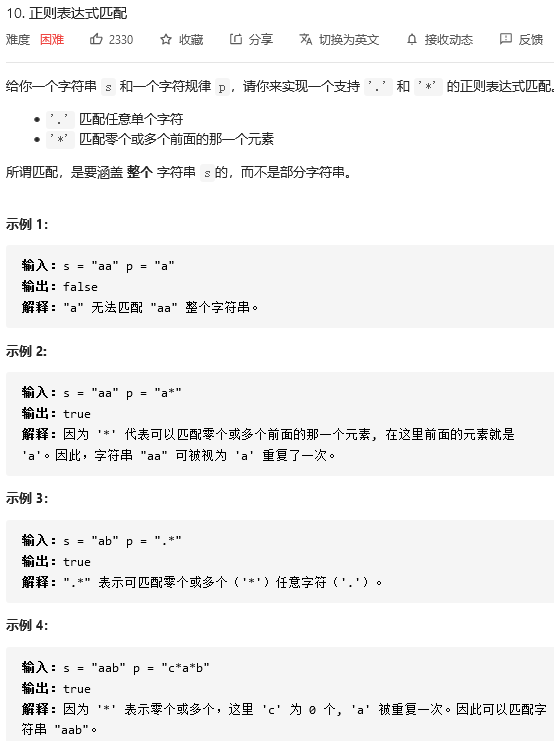
 ##############################################################
##############################################################
##############################################################
##############################################################
##############################################################
##############################################################
11. Container with the most water
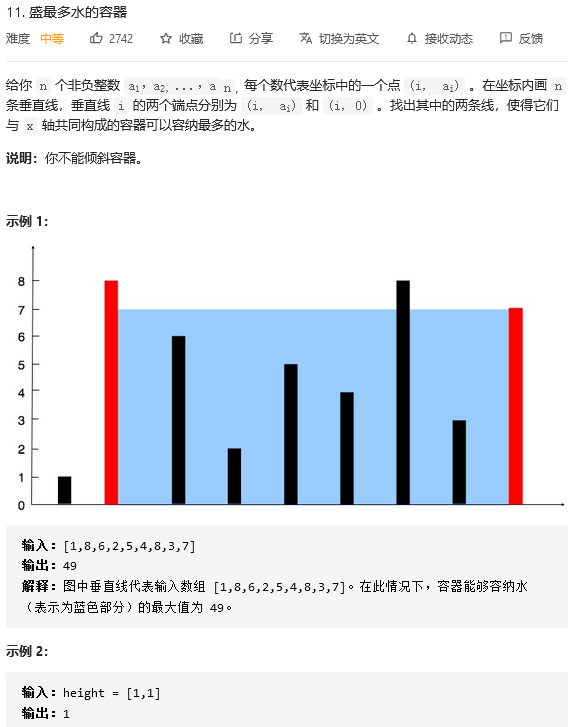
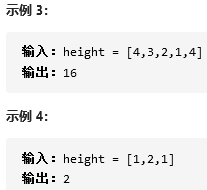
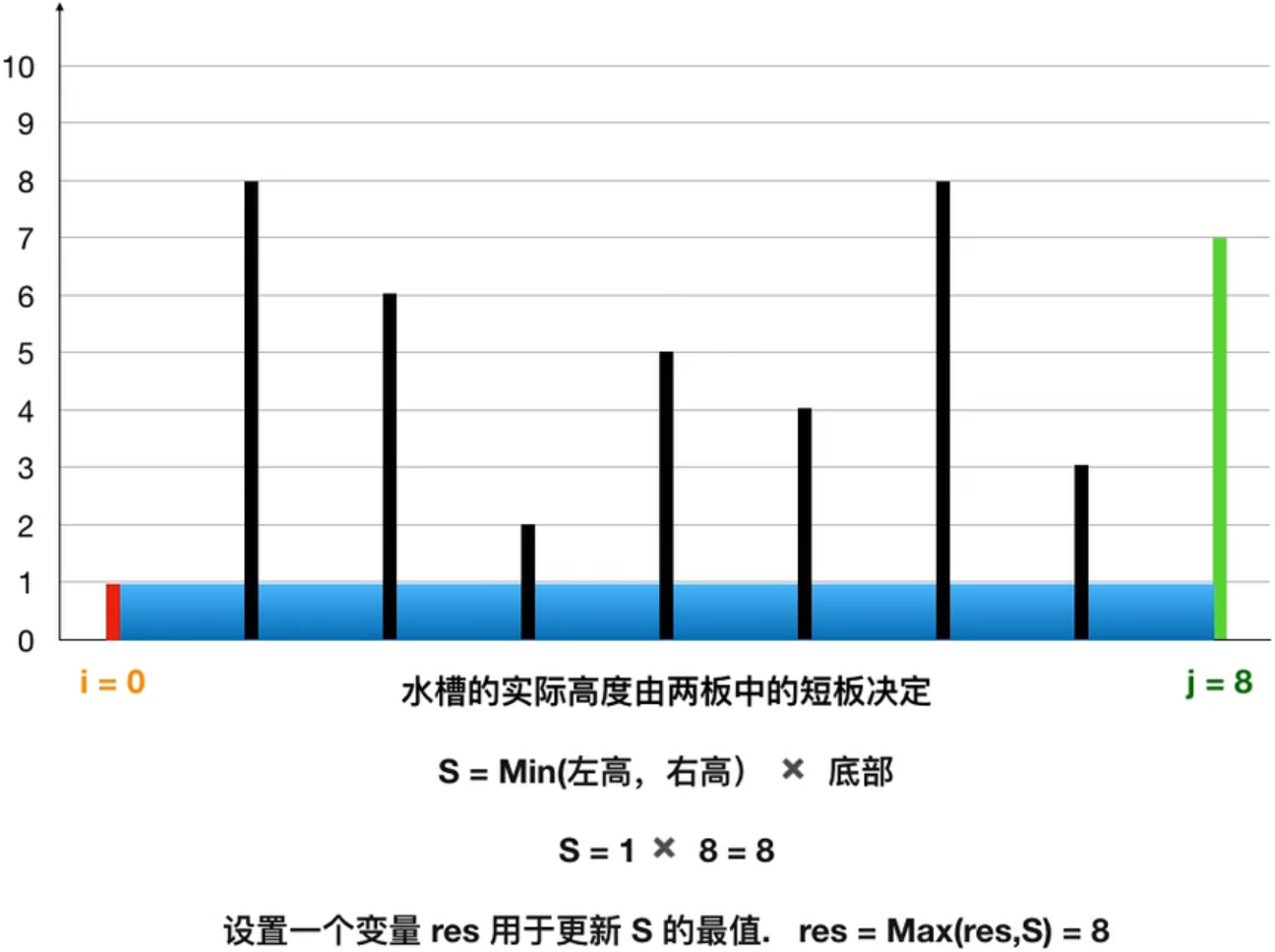
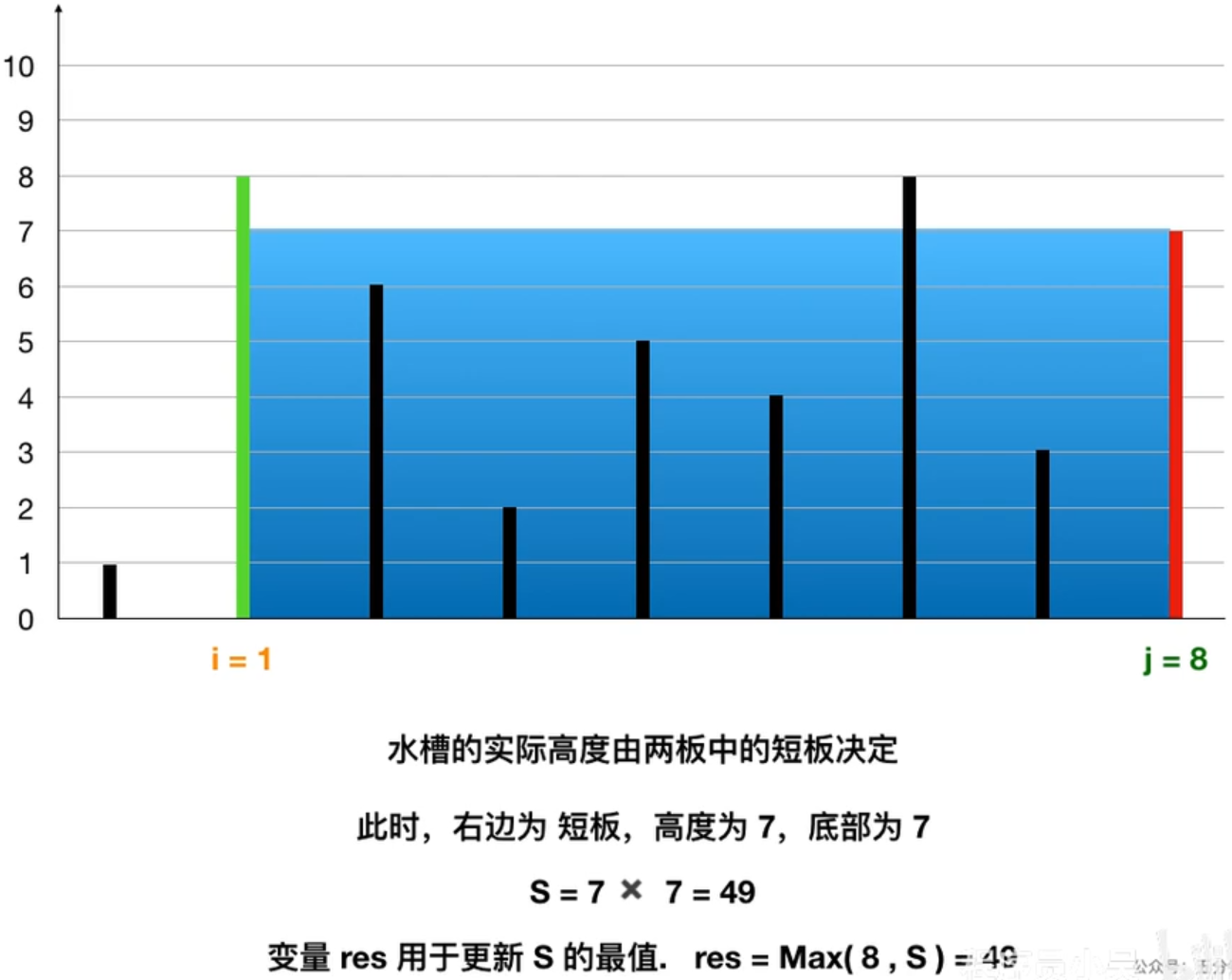
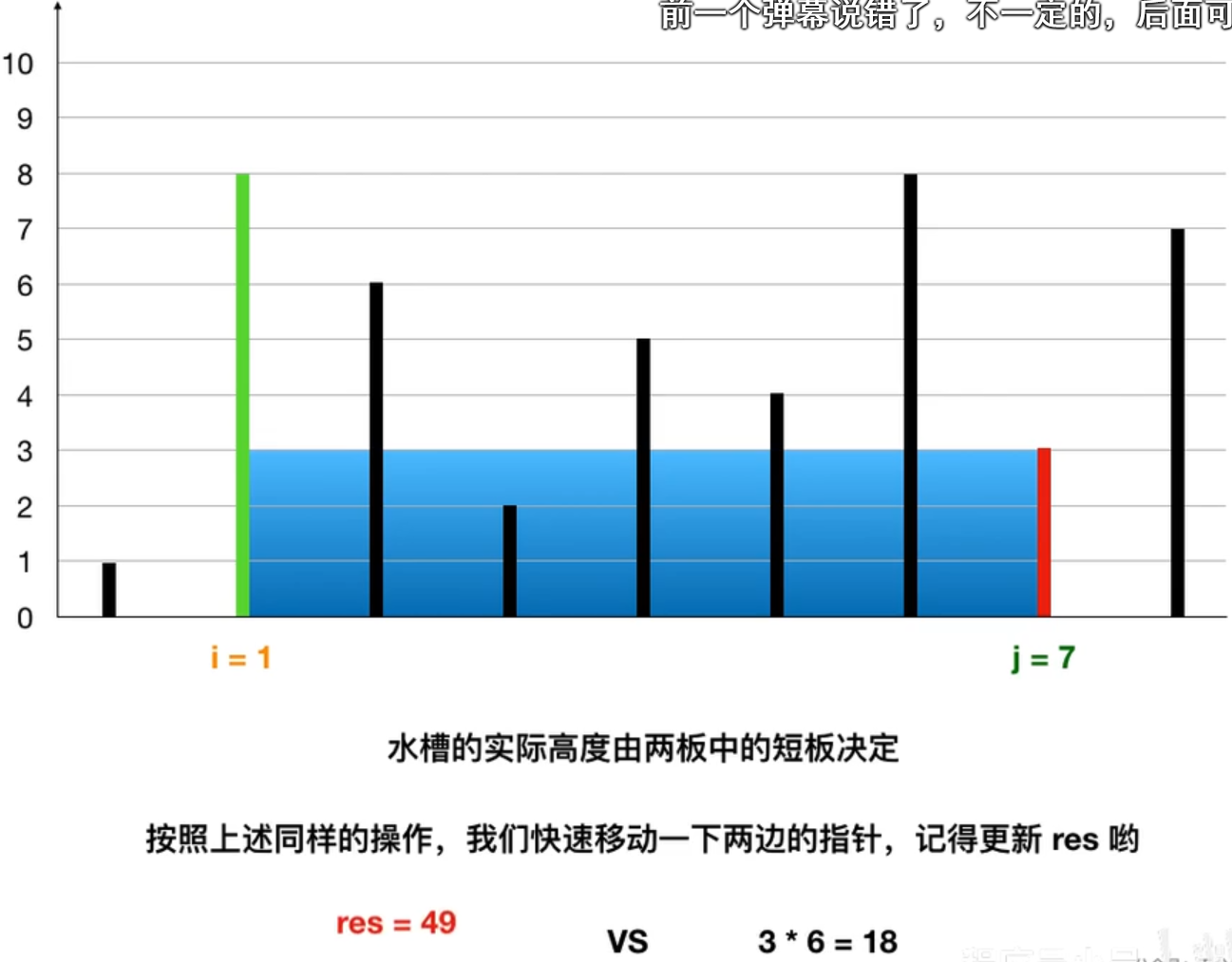 JAVA Code:
JAVA Code:
Time limit exceeded - double pointer
class Solution {
public int maxArea(int[] height) {
int n = height.length;
int MaxArea = 0;
for(int i=0;i<n;i++){
for(int j=i+1;j<n;j++){
int area = (j-i)*Math.min(height[i],height[j]);
MaxArea = Math.max(area,MaxArea);
}
}
return MaxArea;
}
}
JAVA Code:
Left and right pointer
class Solution {
public int maxArea(int[] height) {
int area = 0;
int l = 0;
int r = height.length - 1;
while(l < r){
int MaxArea = (r - l)*Math.min(height[r],height[l]);
area = Math.max(area,MaxArea);
if(height[l] <= height[r]){
l++;
}else{
r--;
}
}
return area;
}
}
#############################################
#############################################
#############################################
#############################################
#############################################
12. Integer to Roman numeral
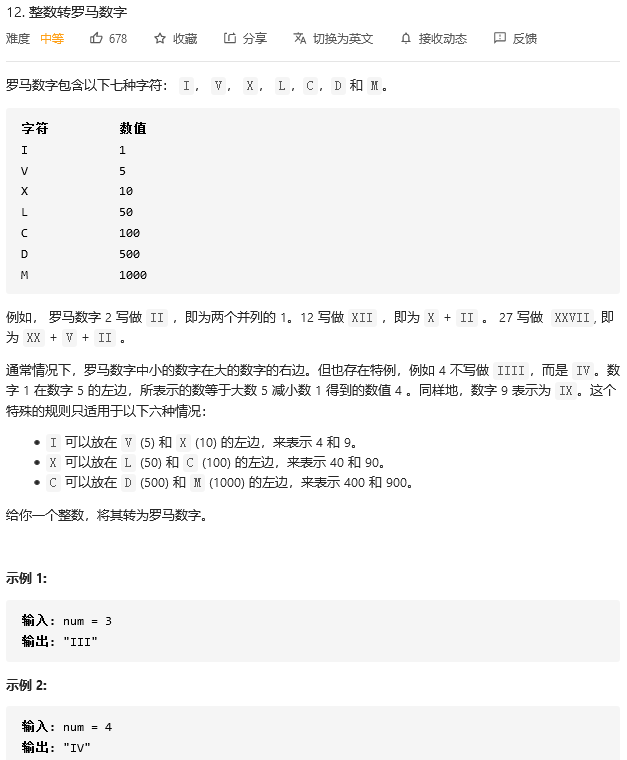
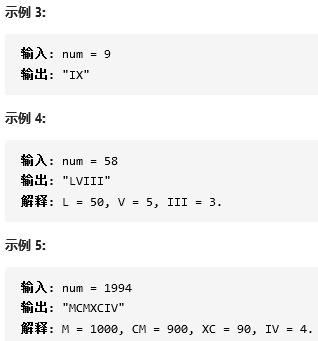 JAVA Code:
JAVA Code:
class Solution {
public String intToRoman(int num) {
int values[] = {1000,900,500,400,100,90,50,40,10,9,5,4,1};
String[] romans = {"M","CM","D","CD","C","XC","L","XL","X","IX","V","IV","I"};
StringBuilder sb = new StringBuilder();
for(int i=0;i<values.length;i++){
while(num>=values[i]){
num -= values[i];
sb.append(romans[i]);
}
}
return sb.toString();
}
}
python code:
class Solution:
def intToRoman(self, num: int) -> str:
res = ''
dic = {1000:'M',900:'CM',500:'D',400:'CD',100:'C',90:'XC',50:'L',40:'XL',10:'X',9:'IX',5:'V',4:'IV',1:'I'}
for x in dic:
tmp = num // x
if tmp:
res += dic[x] * tmp
num -= x * tmp
return res
#################################################
#################################################
#################################################
#################################################
#################################################
13. Roman numeral to integer
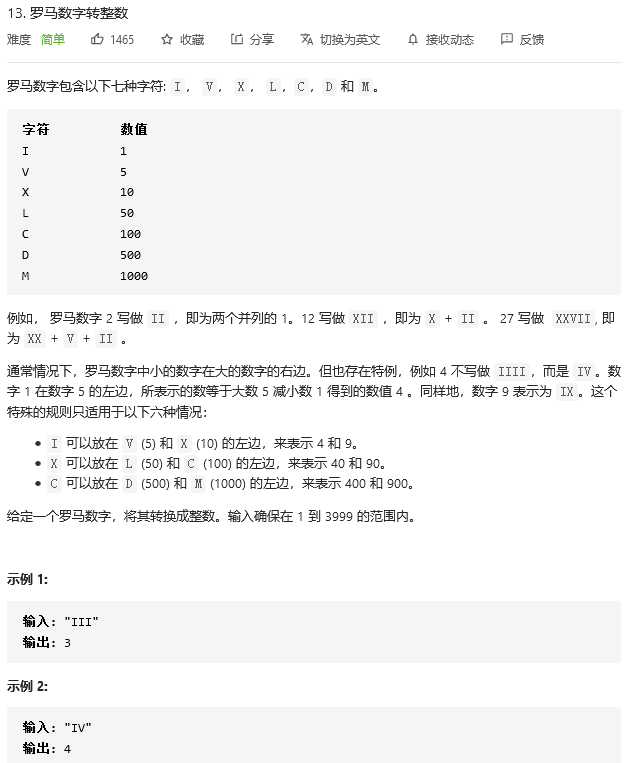
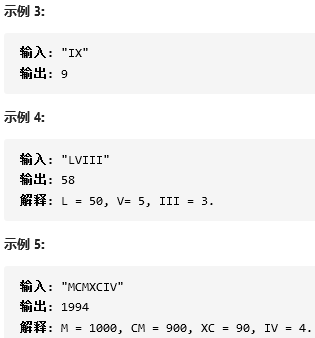 Python Code:
Python Code:
class Solution:
def romanToInt(self, s: str) -> int:
res = 0
dic = {'M':1000,'CM':900,'D':500,'CD':400,'C':100,'XC':90,'L':50,'XL':40,'X':10,'IX':9,'V':5,'IV':4,'I':1}
for x in dic:
while s.startswith(x): #Determines whether the string starts with the specified prefix
res += dic[x]
if len(x) == 1:
s = s[1:]
else:s = s[2:]
return res
#####################################################
#####################################################
#####################################################
#####################################################
#####################################################
14. Longest common prefix
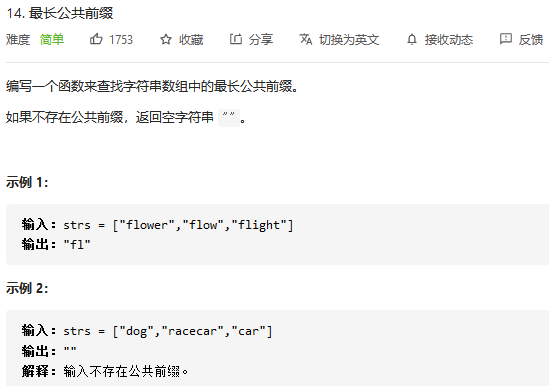 Python Code:
Python Code:
class Solution:
def longestCommonPrefix(self, strs: List[str]) -> str:
res = min(strs)
for s in strs:
for j in range(len(res)):
if( s[j] != res[j]):
res = res[:j]
break
return res
#####################################################
#####################################################
#####################################################
#####################################################
#####################################################
15. Sum of three
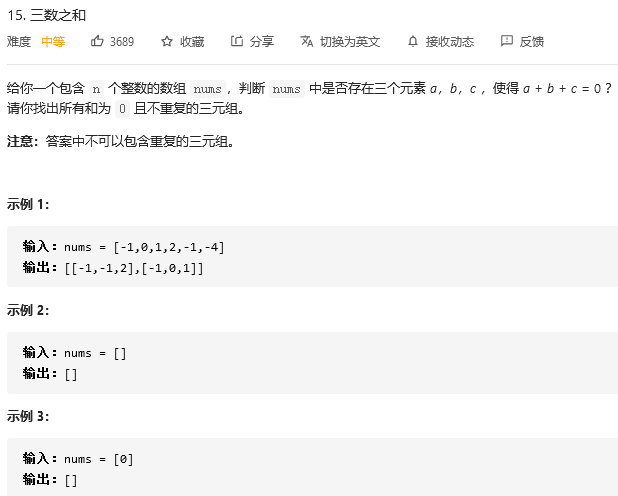 JAVA Code:
JAVA Code:
class Solution {
public List<List<Integer>> threeSum(int[] nums) {
Arrays.sort(nums);
int n = nums.length;
Set<List<Integer>> res = new HashSet<>();
for(int i=0;i<n;i++){
int l = i+1;
int r = n-1;
while(l<r){
if(nums[i]+nums[l]+nums[r] == 0){
res.add(Arrays.asList(nums[i],nums[l],nums[r]));
l++;
r--;
}else if(nums[i] + nums[l] + nums[r] < 0){
l++;
}else{
r--;
}
}
}
List<List<Integer>> ans = new ArrayList<>();
ans.addAll(res);
return ans;
}
}
16. The nearest sum of three
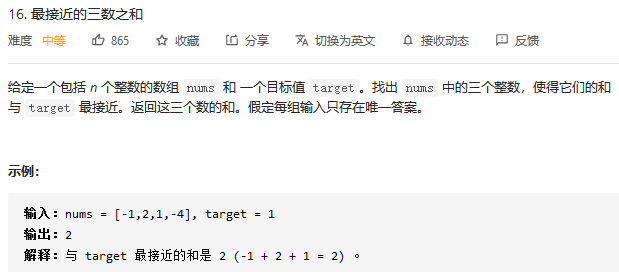 Python:
Python:
class Solution:
def threeSumClosest(self, nums: List[int], target: int) -> int:
nums.sort()
temp = 2**31-1
for i in range(len(nums)-2):
#Double pointer
p = i + 1
q = len(nums) - 1
while p < q:
now = nums[i]+nums[p]+nums[q]
if(abs(now - target) < temp):
temp = abs(now - target)
ans = now
if(now > target):
q-=1
if(now < target):
p+=1
if(now == target):
if p < q:
return nums[i]+nums[p]+nums[q]
return ans
####################################################
####################################################
####################################################
####################################################
####################################################
17. Letter combination of telephone numbers
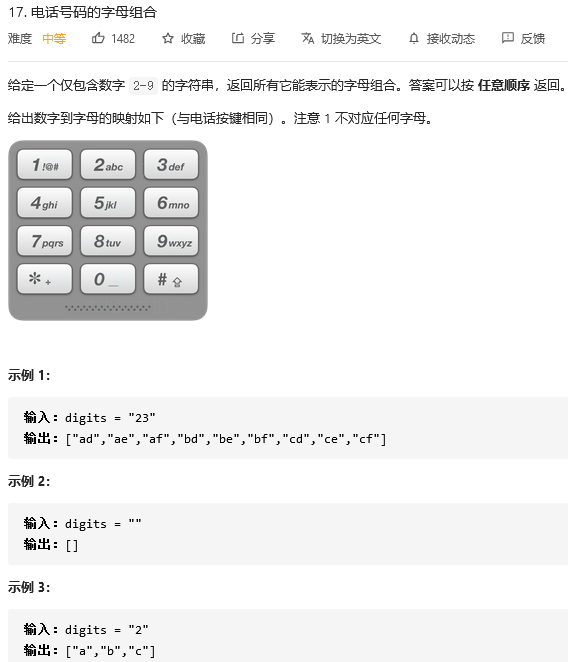 JAVA Code:
JAVA Code:
class Solution {
List<Character> list = new ArrayList<>();
List<List<Character>> res = new ArrayList<List<Character>>();
HashMap<Character,String> map = new HashMap<>();
public List<String> letterCombinations(String digits) {
List<String> finalres = new ArrayList<String>();
if(digits == null || digits.isEmpty()) return finalres;
map.put('2',"abc");
map.put('3',"def");
map.put('4',"ghi");
map.put('5',"jkl");
map.put('6',"mno");
map.put('7',"pqrs");
map.put('8',"tuv");
map.put('9',"wxyz");
helper(digits,0);
for(int i=0;i<res.size();i++){
List<Character> l =res.get(i);
StringBuilder sb = new StringBuilder();
for(int j=0;j<l.size();j++){
sb.append(l.get(j));
}
finalres.add(sb.toString());
}
return finalres;
}
private void helper(String digits,int start){
if(list.size() == digits.length()){
res.add(new ArrayList<Character>(list));
return;
}
Character digit = digits.charAt(start);
String letters = map.get(digit);
for(int i=0;i<letters.length();i++){
list.add(letters.charAt(i));
helper(digits,start+1);
list.remove(list.size()-1);
}
}
}
##################################
##################################
##################################
##################################
##################################
18. Sum of four numbers
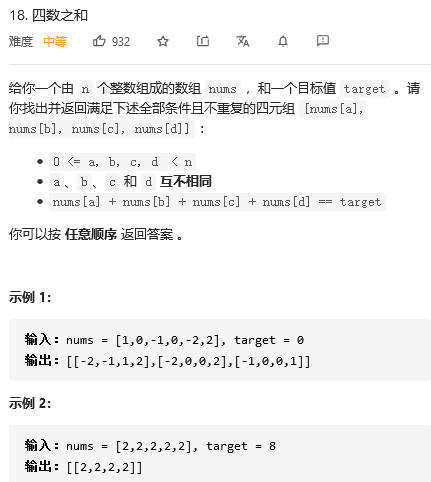 JAVA Code:
JAVA Code:
class Solution {
public List<List<Integer>> fourSum(int[] nums, int target) {
List<List<Integer>> res = new ArrayList<>();
Arrays.sort(nums);
int n = nums.length;
for(int i=0;i<n-3;i++){
if(i>0 && nums[i]==nums[i-1]){
continue;
}
for(int j = i+1;j<n-2;j++){
if(j>i+1 && nums[j] == nums[j-1]){
continue;
}
//two sum
int t = target - nums[i] - nums[j];
int start = j+1,end=n-1;
while(start<end){
int cur = nums[start]+nums[end];
if(cur<t){
start++;
}else if(cur>t){
end--;
}else{
List<Integer> temp = new ArrayList<>();
temp.add(nums[i]);
temp.add(nums[j]);
temp.add(nums[start]);
temp.add(nums[end]);
res.add(temp);
start++;
while(start < end && nums[start] == nums[start-1]){
start++;
}
end--;
while(start < end && nums[end]==nums[end+1]){
end--;
}
}
}
}
}
return res;
}
}
##########################################
##########################################
##########################################
##########################################
##########################################
19. Delete the penultimate node of the linked list
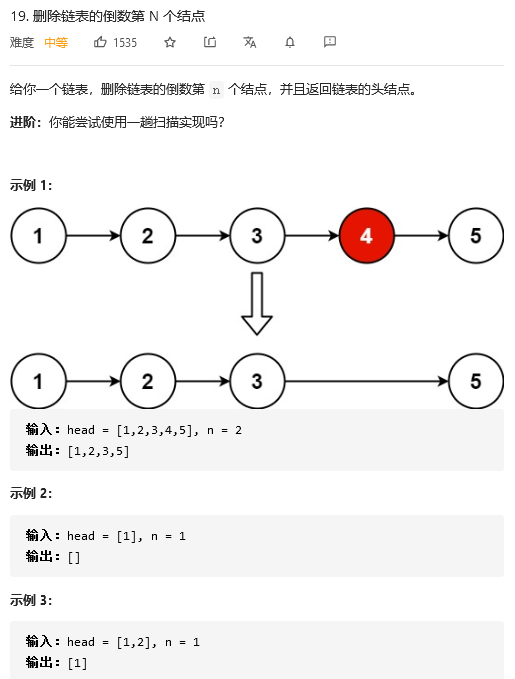 JAVA
JAVA
/**
* Definition for singly-linked list.
* public class ListNode {
* int val;
* ListNode next;
* ListNode() {}
* ListNode(int val) { this.val = val; }
* ListNode(int val, ListNode next) { this.val = val; this.next = next; }
* }
*/
class Solution {
public ListNode removeNthFromEnd(ListNode head, int n) {
ListNode dummy = new ListNode(-1,head);
int len = getLength(head);
ListNode tmp = dummy;
for(int i=1;i<=(len-n);i++){
tmp = tmp.next;
}
tmp.next = tmp.next.next;
return dummy.next;
}
private int getLength(ListNode head){
int res = 0; //Get linked list length
while(head != null){
res++;
head = head.next;
}
return res;
}
}
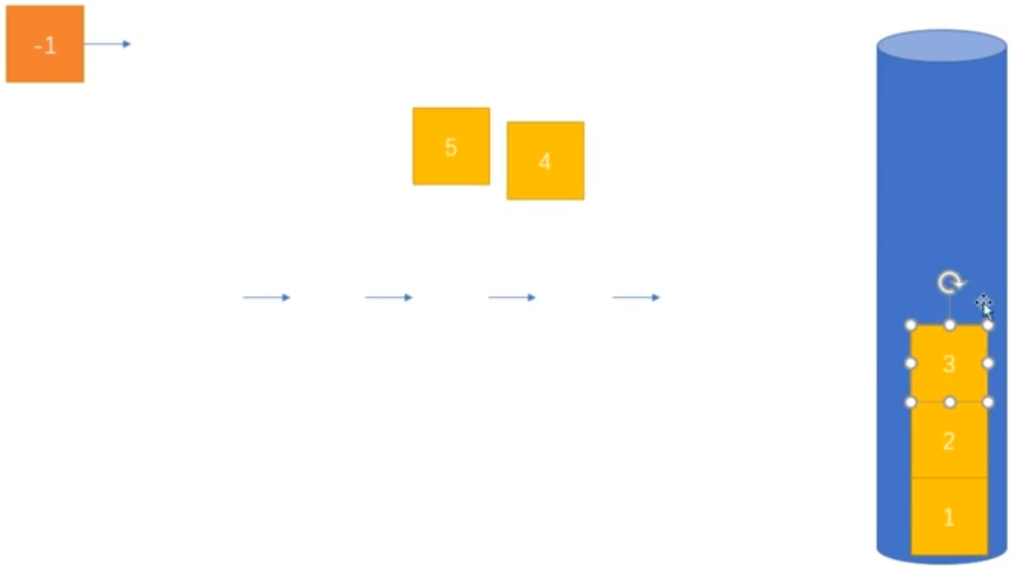
JAVA
/**
* Definition for singly-linked list.
* public class ListNode {
* int val;
* ListNode next;
* ListNode() {}
* ListNode(int val) { this.val = val; }
* ListNode(int val, ListNode next) { this.val = val; this.next = next; }
* }
*/
class Solution {
public ListNode removeNthFromEnd(ListNode head, int n) {
ListNode dummy = new ListNode(-1,head);
Stack<ListNode> stack = new Stack<>();
ListNode tmp = dummy;
while(tmp != null){
stack.push(tmp);
tmp = tmp.next;
}
for(int i=1;i<=n;i++){
stack.pop();
}
ListNode ans = stack.peek(); //Returns the element at the top of the stack without removing it
ans.next = ans.next.next;
return dummy.next;
}
}
Double pointer: JAVA
/**
* Definition for singly-linked list.
* public class ListNode {
* int val;
* ListNode next;
* ListNode() {}
* ListNode(int val) { this.val = val; }
* ListNode(int val, ListNode next) { this.val = val; this.next = next; }
* }
*/
class Solution {
public ListNode removeNthFromEnd(ListNode head, int n) {
ListNode dummy = new ListNode(-1,head);
ListNode first = head;
ListNode second = dummy;
for(int i=1;i<=n;i++){
first=first.next;
}
while(first != null){
first = first.next;
second = second.next;
}
second.next = second.next.next;
return dummy.next;
}
}
#####################################
#####################################
#####################################
#####################################
#####################################
23. Merge K ascending linked lists
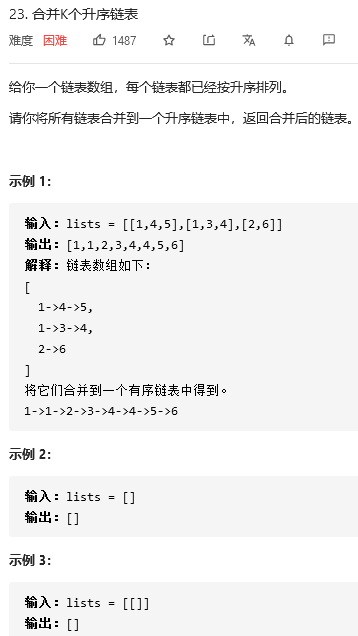
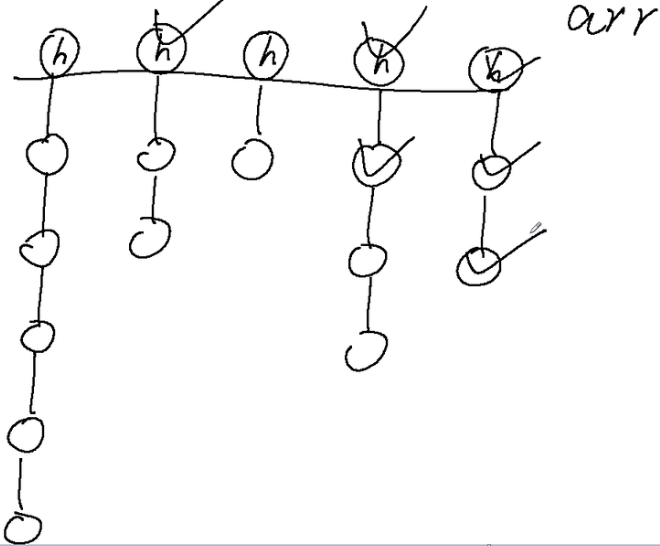 JAVA Code:
JAVA Code:
/**
* Definition for singly-linked list.
* public class ListNode {
* int val;
* ListNode next;
* ListNode() {}
* ListNode(int val) { this.val = val; }
* ListNode(int val, ListNode next) { this.val = val; this.next = next; }
* }
*/
class Solution {
public ListNode mergeKLists(ListNode[] lists) {
ListNode head = null; //Immobility
ListNode temp = null; //Move, move back
while(true){
int minIndex = -1;//Minimum subscript per array
for(int i=0;i<lists.length;i++){
if(lists[i] != null){
if(minIndex == -1){
minIndex = i;
}else{
if(lists[i].val < lists[minIndex].val){
minIndex = i;
}
}
}
}
if(minIndex == -1){
break; //All nodes are empty
}
if(head == null){
head = lists[minIndex];
temp = head; //initialization
}else{
temp.next = lists[minIndex]; //The next step of temp is the minimum value of the current traversal
temp = temp.next; //temp moves back for the next cycle
}
lists[minIndex] = lists[minIndex].next;
}
return head;
}
}
Solve with heap
JAVA Code:
/**
* Definition for singly-linked list.
* public class ListNode {
* int val;
* ListNode next;
* ListNode() {}
* ListNode(int val) { this.val = val; }
* ListNode(int val, ListNode next) { this.val = val; this.next = next; }
* }
*/
class Solution {
private Comparator<ListNode> comparator = new Comparator<ListNode>(){
@Override
public int compare(ListNode o1,ListNode o2){
if(o1.val > o2.val){
return 1;
}else if(o1.val < o2.val){
return -1;
}else{
return 0;
}
}
};
public ListNode mergeKLists(ListNode[] lists) {
ListNode head = null;
ListNode temp = null;
PriorityQueue<ListNode> heap = new PriorityQueue<>(comparator); //Heap, take the minimum value each time
for(int i=0;i<lists.length;i++){
if(lists[i] != null){
heap.offer(lists[i]);
}
}
while(heap.size()>0){
ListNode temp0 = heap.poll(); //Pop up minimum
if(head == null){ //initialization
head = temp0;
temp = head;
}else{ //Point to next
temp.next = temp0;
temp = temp.next; //Point to the next and enter the next cycle
}
if(temp0.next != null){ //Throw the next one in the heap
heap.offer(temp0.next); //Throw the next one in the list
}
}
return head;
}
}
########################################################
########################################################
#########################################################
########################################################
########################################################
25. Turn over the linked list in groups of K
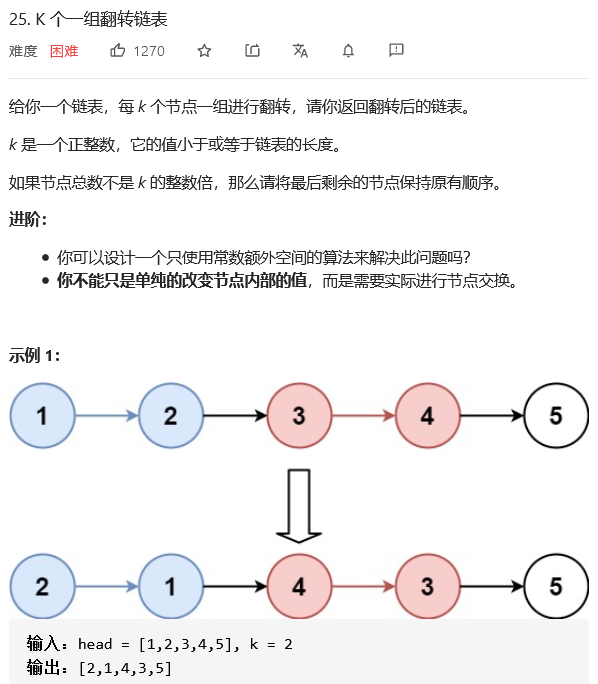
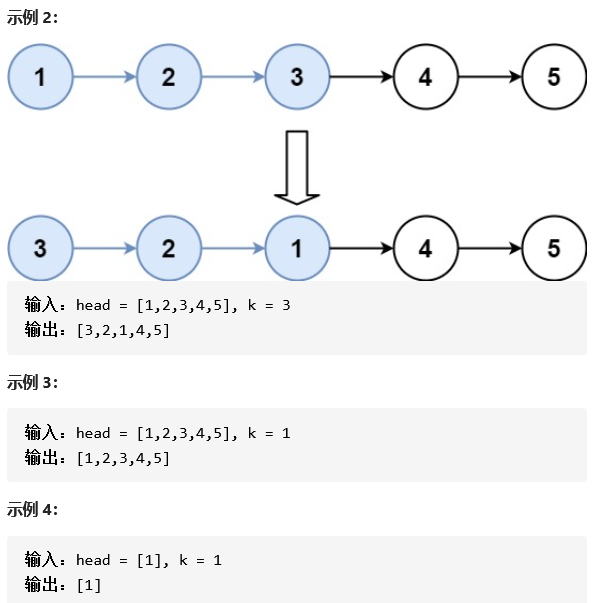
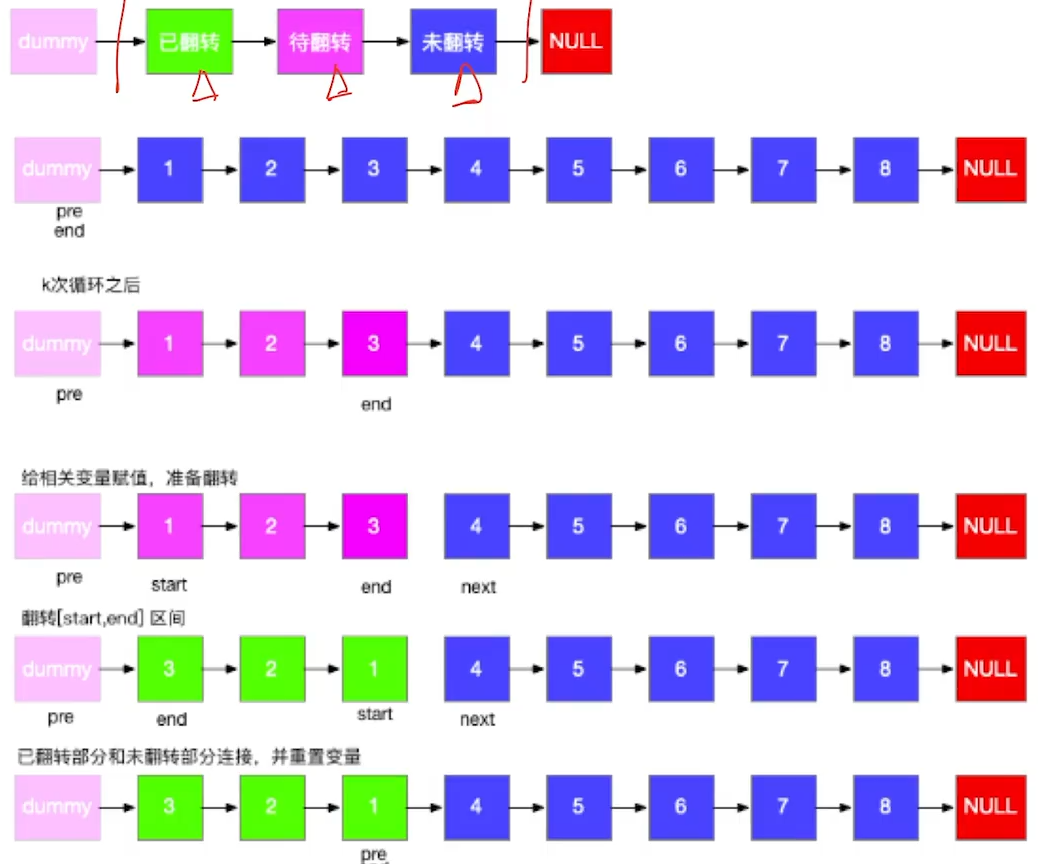
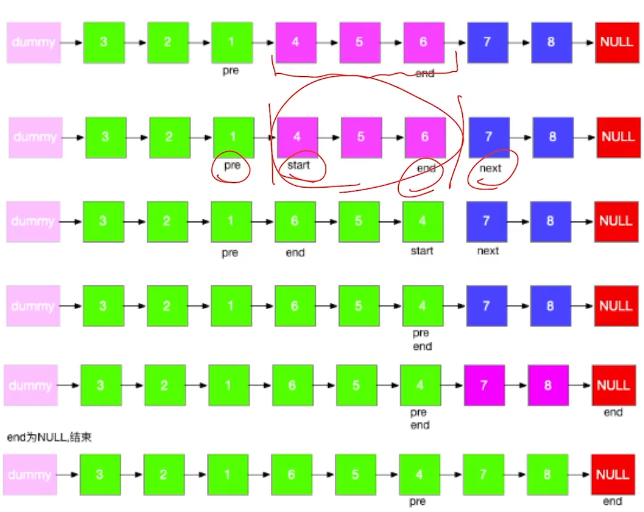
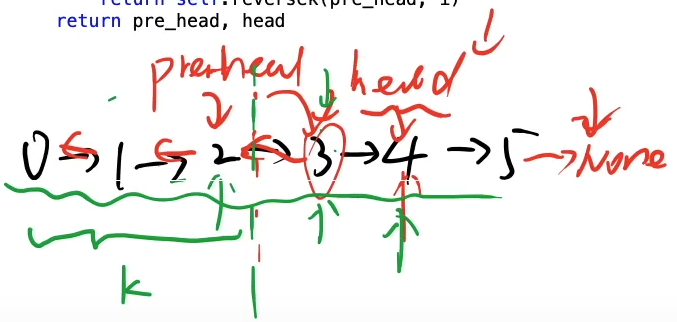
Python
# Definition for singly-linked list.
# class ListNode:
# def __init__(self, val=0, next=None):
# self.val = val
# self.next = next
class Solution:
def reverseKGroup(self, head: ListNode, k: int) -> ListNode:
ret_head = ListNode()
tail_head = ret_head
while head:
reversed_head,next_head = self.reversek(head,k)
tail_head.next = reversed_head
tail_head = head
head = next_head
return ret_head.next
def reversek(self,head,k):
if k==1:
return head,None
i=0
pre_head = None
while(head and i < k):
next = head.next
head.next = pre_head
pre_head = head
head = next
i += 1
if i != k:
return self.reversek(pre_head,i)
return pre_head,head
##############################################################3
###############################################################
###############################################################
###############################################################
#################################################################
29. Division of two numbers
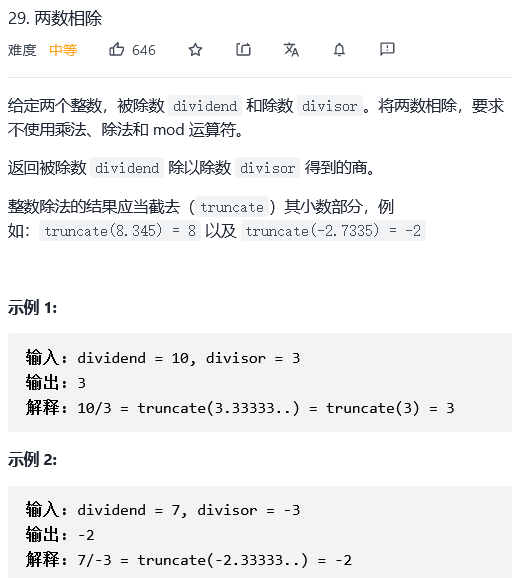
Python Code:
class Solution:
def divide(self, dividend: int, divisor: int) -> int:
limit = 2**31
isNeg = (dividend<0)!=(divisor<0)
dividend,divisor = abs(dividend),abs(divisor)
res = 0
div,track = divisor,1
while dividend >= divisor:
while dividend >= (div<<1):
div <<= 1
track <<= 1
res += track
dividend -= div
div,track = divisor,1
return max(-limit,min(limit-1,-res if isNeg else res))
#########################################################
#########################################################
#########################################################
#########################################################
#########################################################
30. Concatenate substrings of all words
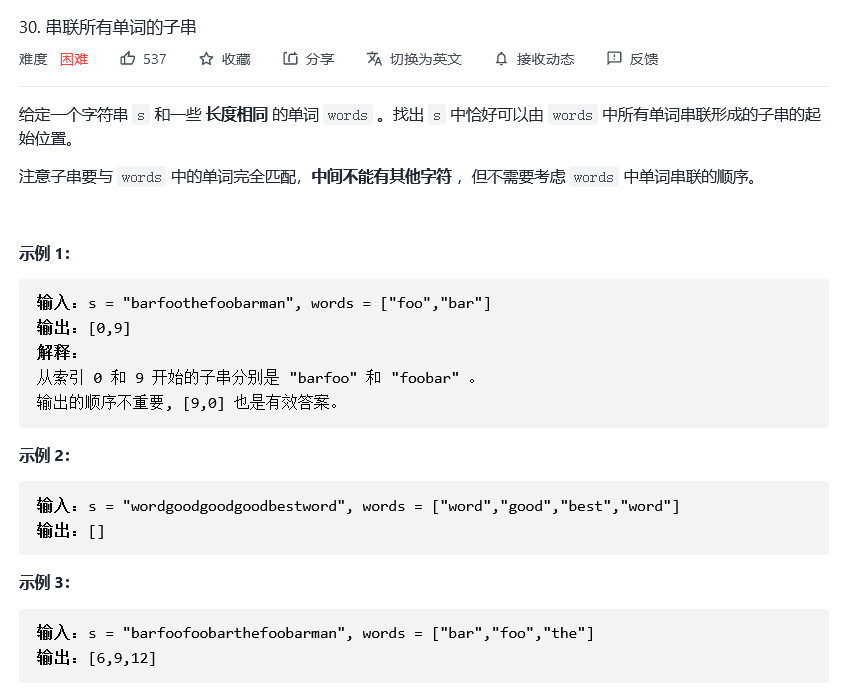 Python Code:
Python Code:
class Solution:
def findSubstring(self, s: str, words: List[str]) -> List[int]:
n,m,num = len(s),len(words),len(words[0])
ans = []
wordmap = Counter(words) ##Returns an object whose key is the value of the list and value is the specific number of the value
for i in range(n-m*num+1):
#s[i:i+n*num] sliding window
j = 0
hashmap = dict()
while j<m:
key = s[i+j*num:i+j*num+num]
if key in wordmap:
hashmap[key]=hashmap[key]+1 if key in hashmap else 1
if hashmap[key] > wordmap[key]:
break
else:
break
j+=1
if j==m:
ans.append(i)
return ans
###########################################################
###########################################################
############################################################
###########################################################
###########################################################
31. Next arrangement
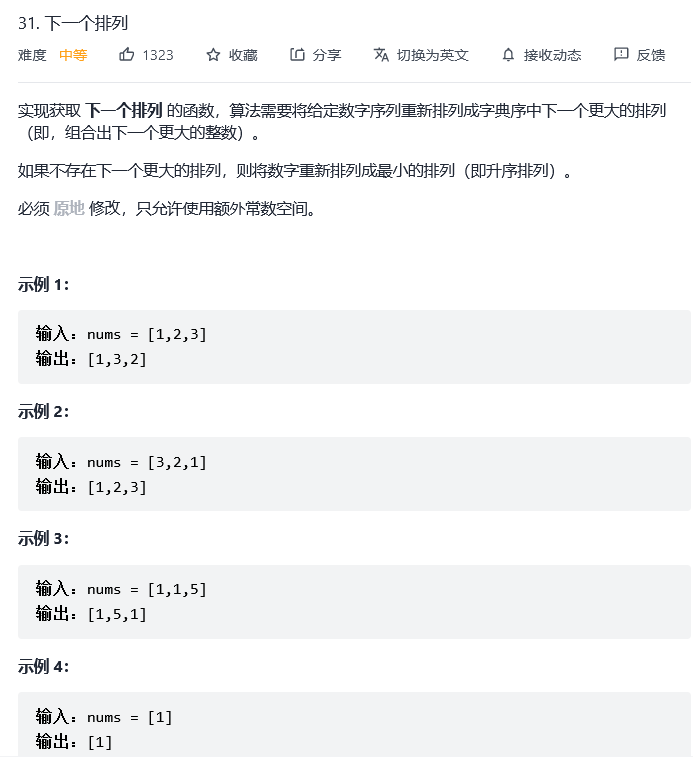

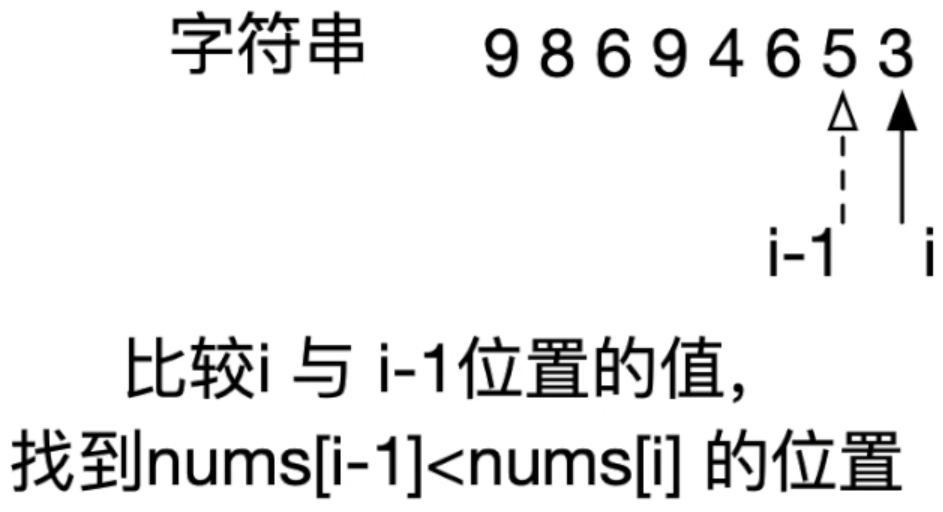
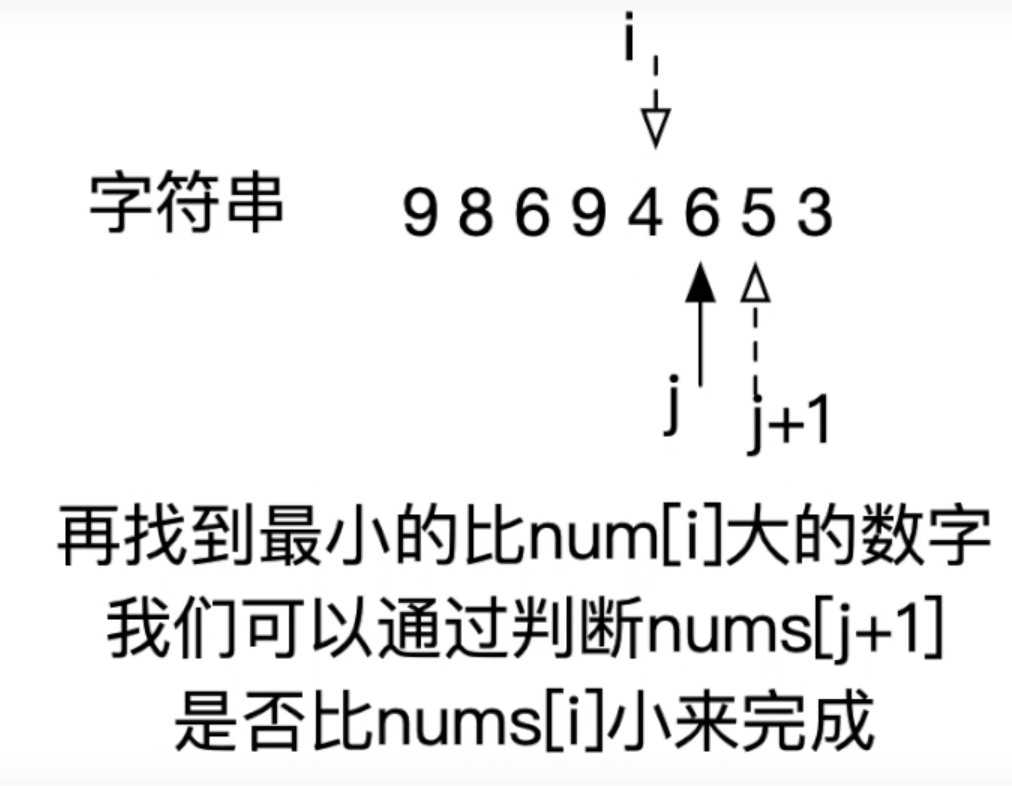
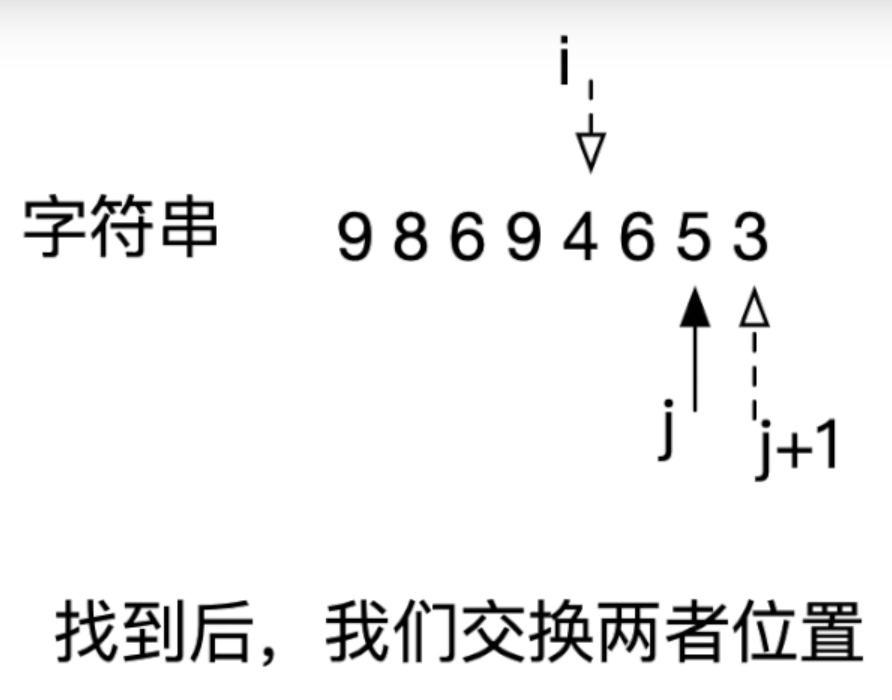
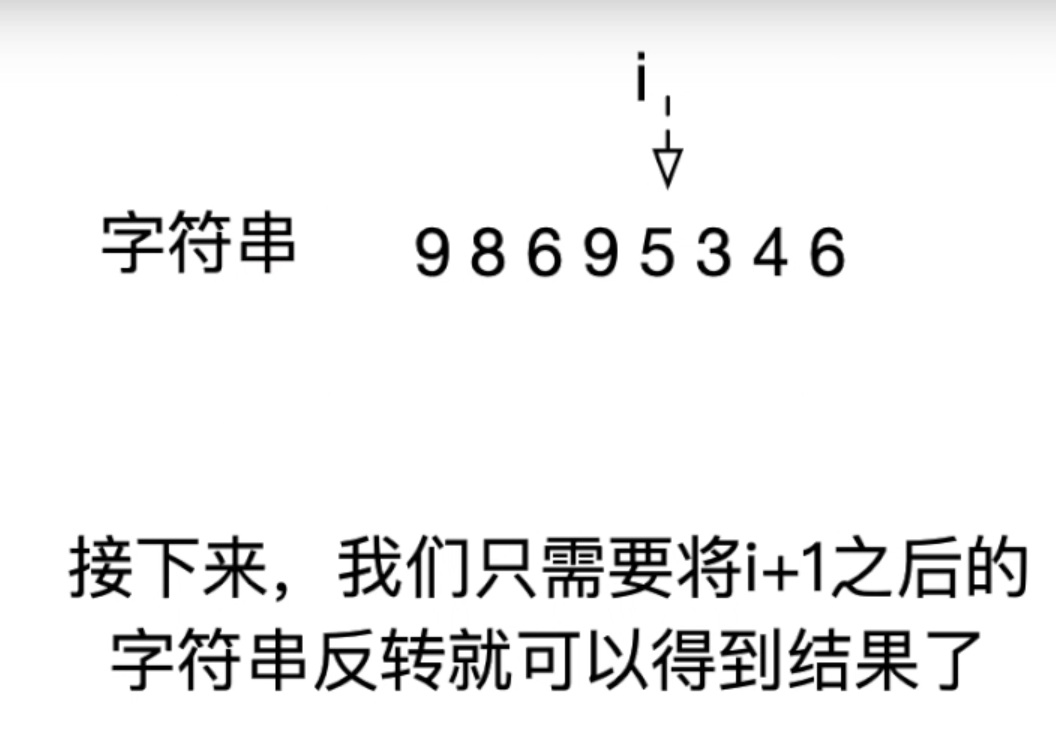
Python code:
class Solution:
def nextPermutation(self, nums: List[int]) -> None:
"""
Do not return anything, modify nums in-place instead.
"""
if sorted(nums,reverse=True) == nums: #Sort from large to small, this is the maximum value
nums[:] = nums[::-1] #Invert array
return
for i in range(len(nums)-1)[::-1]: #Flashback 10 9 8 7 6 5 4 3 2 1 0
if nums[i]<nums[i+1]:
break
for j in range(i+1,len(nums)):
if j==len(nums)-1 or nums[j+1]<=nums[i]:
nums[i],nums[j] = nums[j],nums[i]
break
nums[i+1:] = nums[i+1:][::-1]
return
#######################################################
#######################################################
#######################################################
#######################################################
#######################################################
32. Longest valid bracket
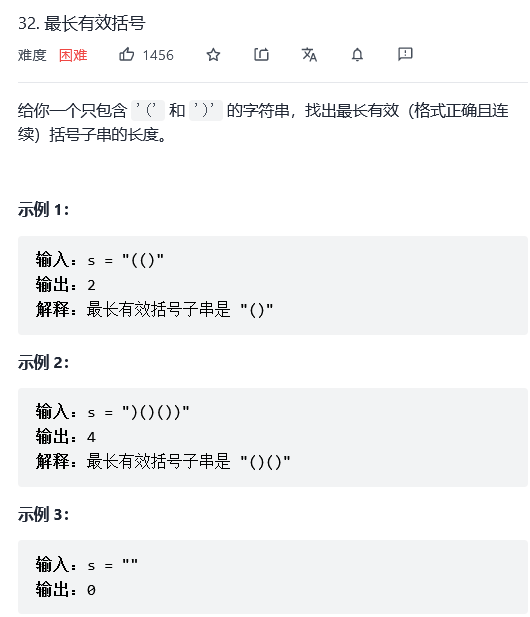
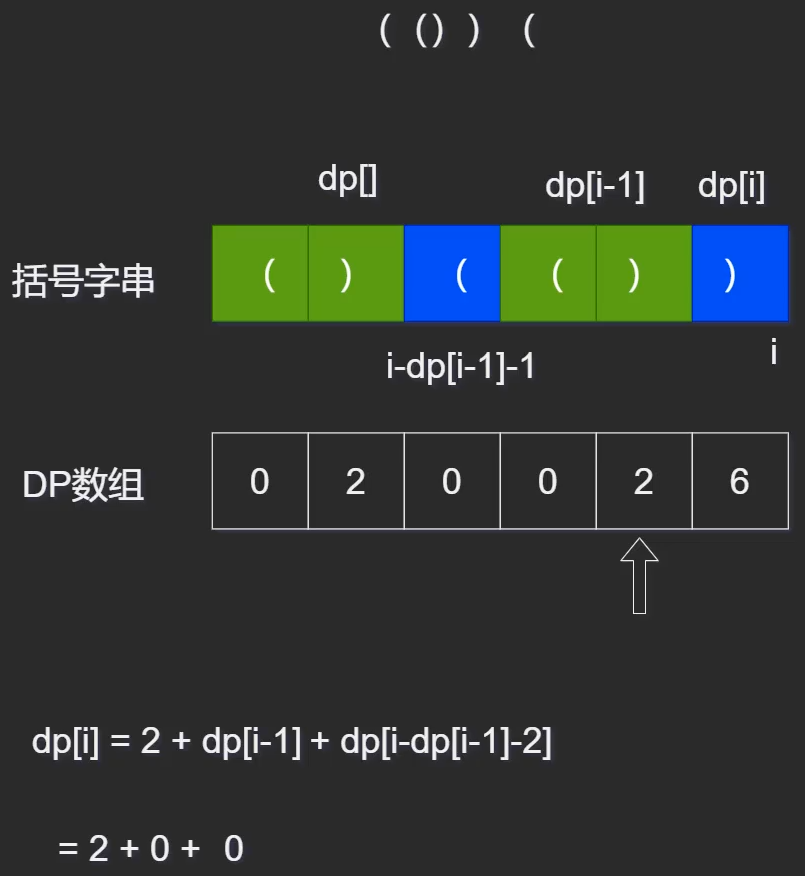 dynamic programming
dynamic programming
JAVA Code:
class Solution {
public int longestValidParentheses(String s) {
int[] dp = new int[s.length()];
Arrays.fill(dp,0);
int max = 0;
for(int i=1;i<s.length();i++){
char c = s.charAt(i);
if(c==')'){
if(i-dp[i-1]>0 && s.charAt(i-dp[i-1]-1)=='('){
dp[i] = 2 + dp[i-1] + (i-dp[i-1]-2>-1 ? dp[i-dp[i-1]-2]:0);
}
}
max = Math.max(max,dp[i]);
}
return max;
}
}

Stack + dynamic programming
class Solution:
def longestValidParentheses(self, s: str) -> int:
N = len(s)
stack = []
dp = [0]*(N+1)
#
for i,ch in enumerate(s):
index = i+1
if ch == '(':
stack.append(ch)
else: #')'
if stack:
stack.pop()
pairs = 1+dp[index-1]
prev_index = index - pairs * 2
if prev_index > 0:
pairs += dp[prev_index]
dp[index] = pairs
return max(dp)*2
##############################################
##############################################
##############################################
##############################################
##############################################
33. Search rotation sorting array
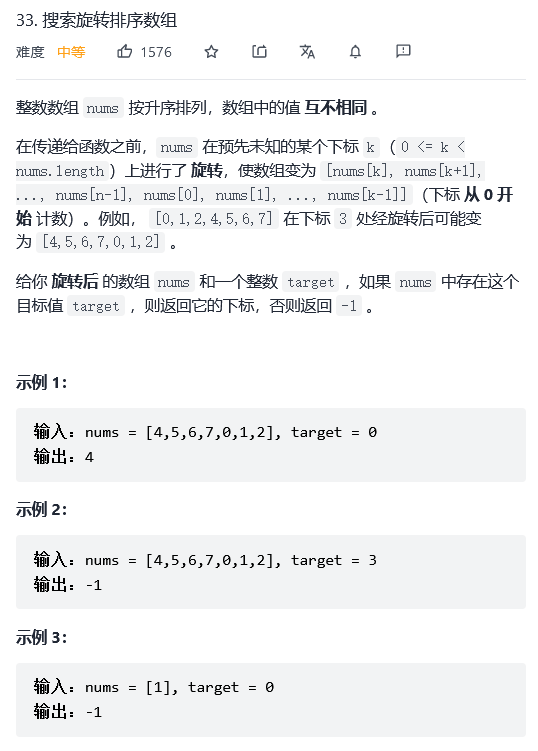
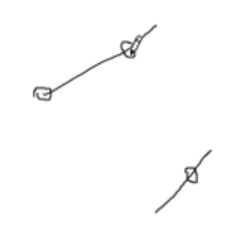 JAVA Code:
JAVA Code:
class Solution {
public int search(int[] nums, int target) {
int l = 0;
int r = nums.length - 1;
while(l <= r){
int m = (l+r)/2;
if(nums[m] == target) return m;
else if(nums[m] < target){
if(nums[m] >= nums[0]){
l = m + 1;
}else{
if(target < nums[0]){
l = m + 1;
}else{
r = m - 1;
}
}
}else if(nums[m] > target){
if(nums[m] >= nums[0]){
if(target < nums[0]){
l = m + 1;
}else{
r = m - 1;
}
}else{
r = m - 1;
}
}
}
return -1;
}
}
##################################################
##################################################
##################################################
##################################################
##################################################
34. Find the first and last positions of elements in the sorted array
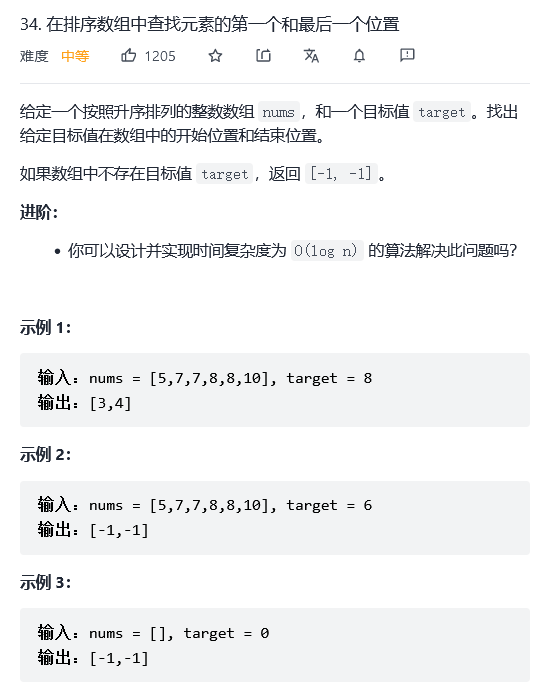 Dichotomy JAVA Code:
Dichotomy JAVA Code:
class Solution {
public int[] searchRange(int[] nums, int target) {
int firstIndex = findFirst(nums,target);
int lastIndex = findFirst(nums,target+1)-1;
if(firstIndex == nums.length || nums[firstIndex] != target){
return new int[]{-1,-1};
}else{
return new int[]{firstIndex,lastIndex};
}
}
//The binary search method encapsulates the location where the target first appears
private int findFirst(int[] nums,int target){
//Here, the high value is 1 greater than the maximum value of the array subscript, because if the current target does not exist
//In the array, we insert it to the last position, because here we want to find the target
//For the last position, we first find the position 1 larger than the target, that is, target+1
//The first occurrence position of the target, and then the subscript minus 1 is the last occurrence position of the target
int low = 0,high = nums.length;
while(low <high){
int mid = low + (high - low)/2;
if(nums[mid] >= target){
high = mid;
}else{
low = mid + 1;
}
}
return low;
}
}
##############################################
##############################################
##############################################
##############################################
##############################################
36. Effective Sudoku
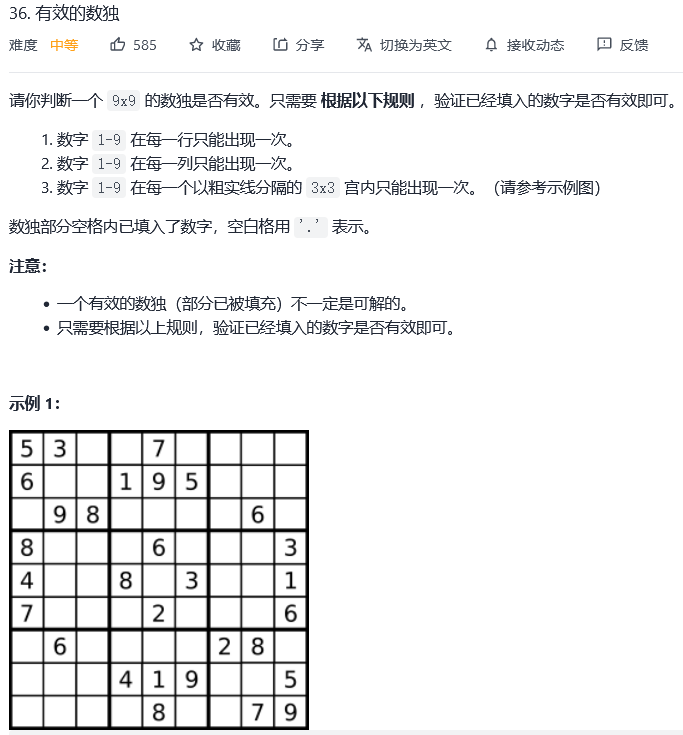
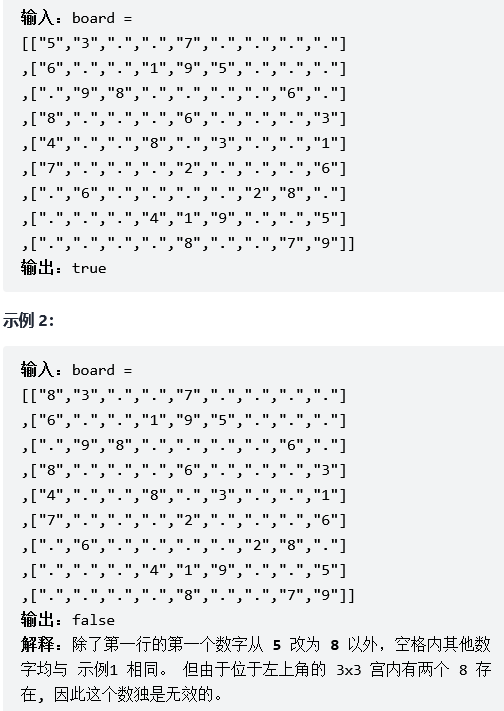 Violence law JAVA Code:
Violence law JAVA Code:
class Solution {
public boolean isValidSudoku(char[][] board) {
HashSet<String> set = new HashSet<>();
for(int i=0;i<9;i++){
for(int j=0;j<9;j++){
char curr = board[i][j];
if(curr=='.') continue;
int boxIndex = i/3*3 + j/3;
String r = curr + " in row " + i;
String c = curr + " in col " + j;
String b = curr + " in box " + boxIndex;
boolean res = set.add(r) && set.add(c) && set.add(b);
if(!res) return false;
}
}
return true;
}
}
JAVA Code:
class Solution {
public boolean isValidSudoku(char[][] board) {
//HashSet<String> set = new HashSet<>();
boolean[][] row = new boolean[9][9];
boolean[][] col = new boolean[9][9];
boolean[][] box = new boolean[9][9];
for(int i=0;i<9;i++){
for(int j=0;j<9;j++){
char curr = board[i][j];
if(curr=='.') continue;
int currIndex = curr - '1'; //index
int boxIndex = i/3*3 + j/3;
if(row[i][currIndex] ||col[j][currIndex] || box[boxIndex][currIndex]) return false;
row[i][currIndex] = true;
col[j][currIndex] = true;
box[boxIndex][currIndex] = true;
}
}
return true;
}
}
###########################################
###########################################
###########################################
###########################################
###########################################
37. Solving Sudoku
